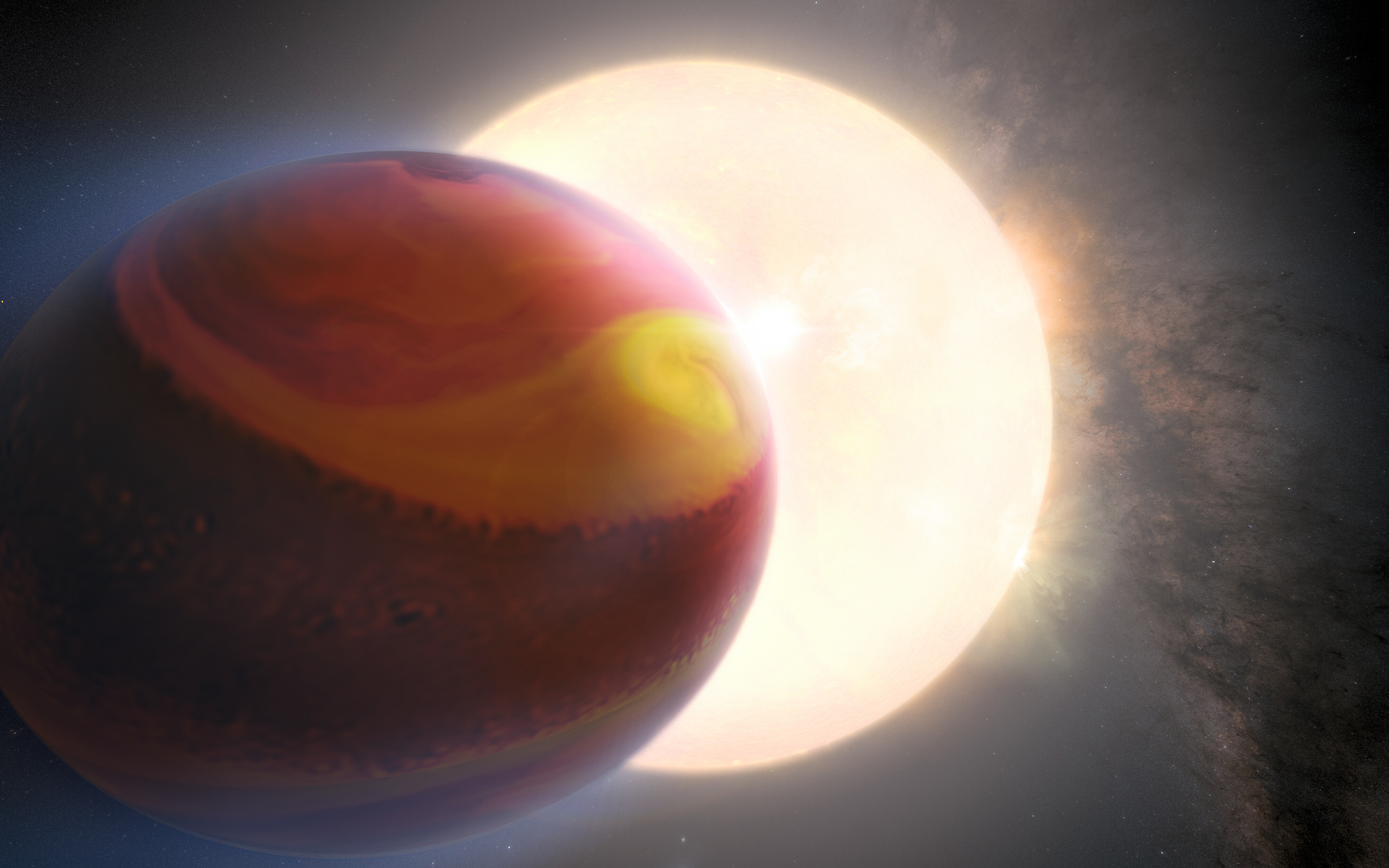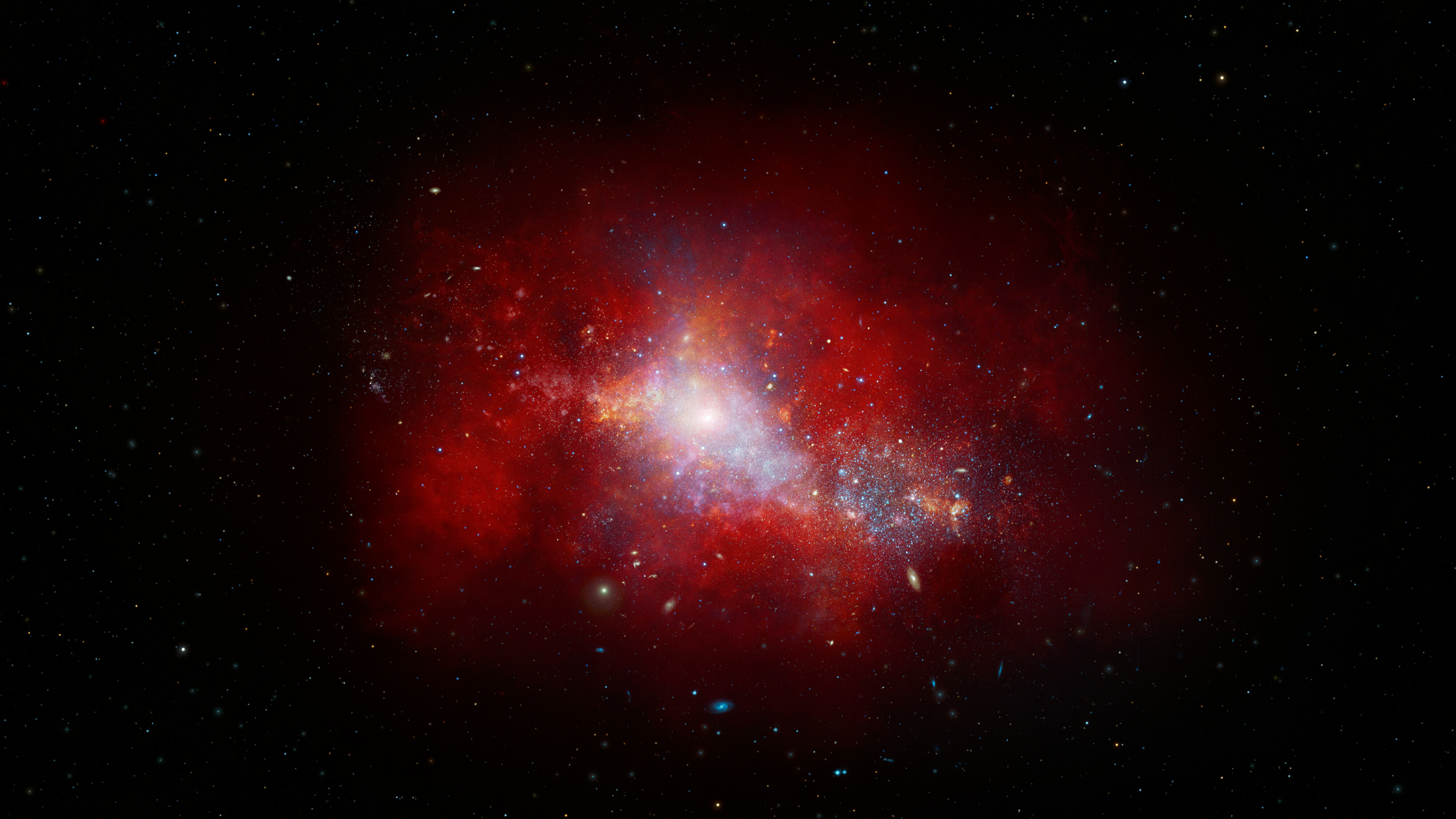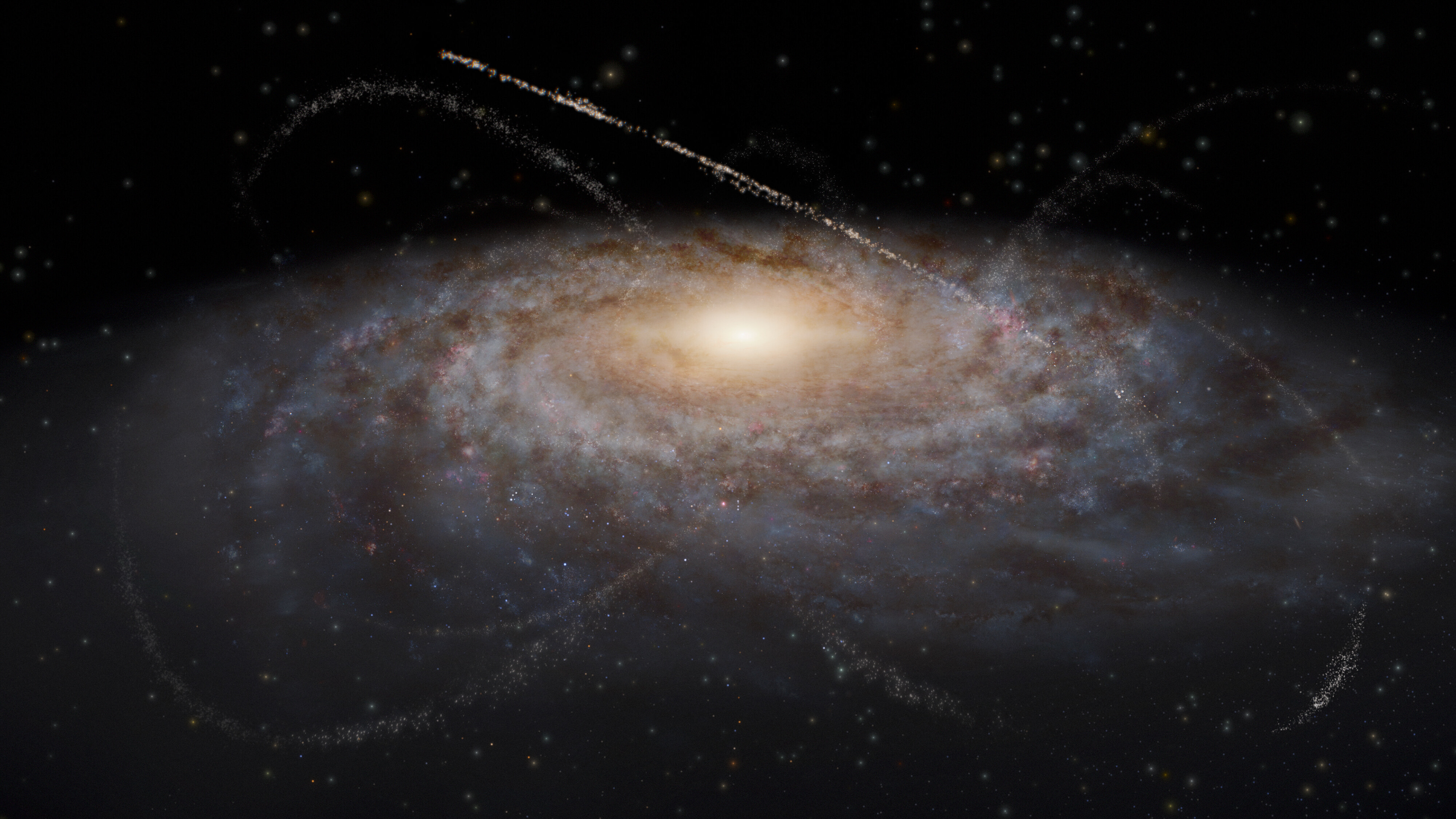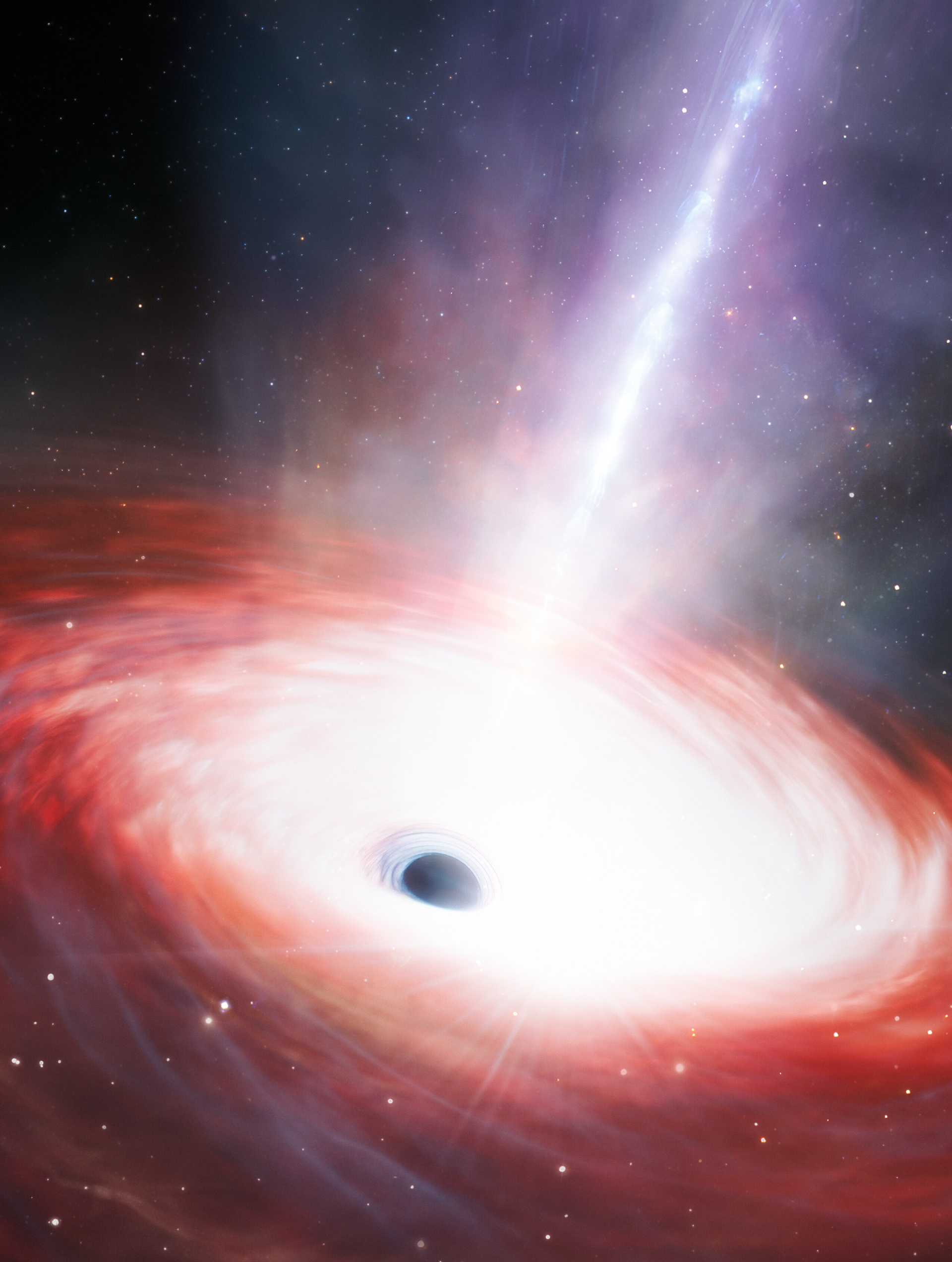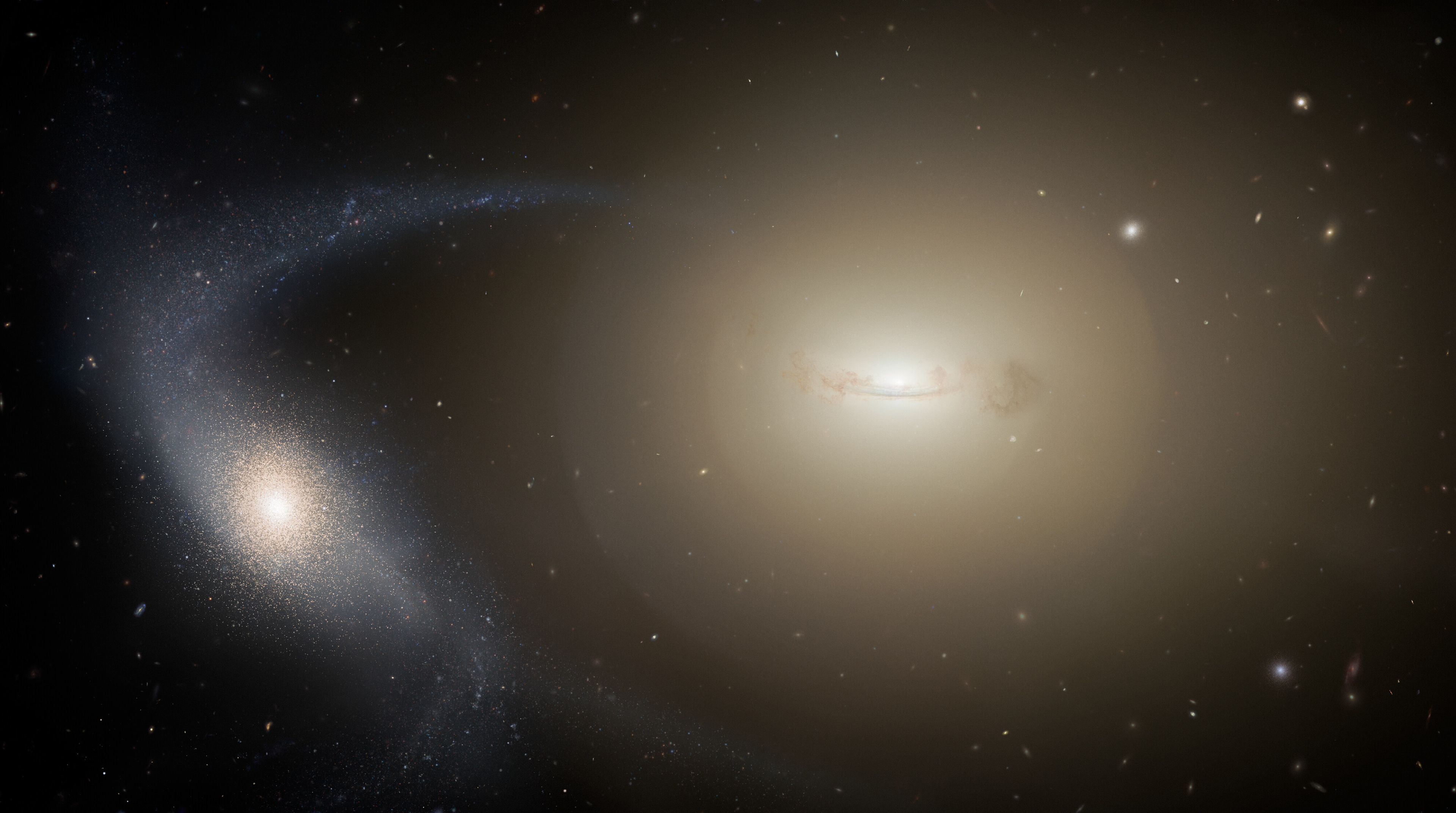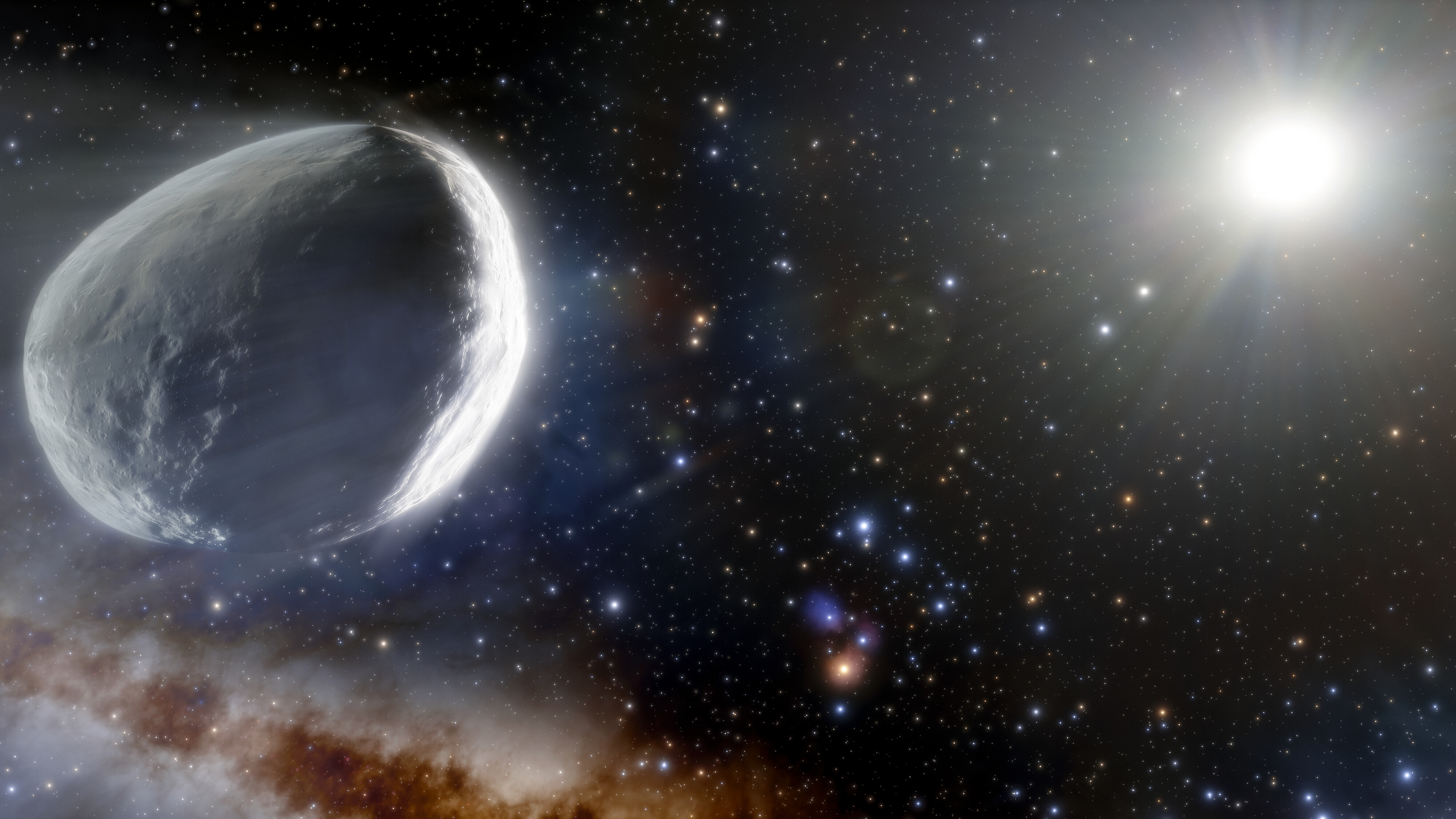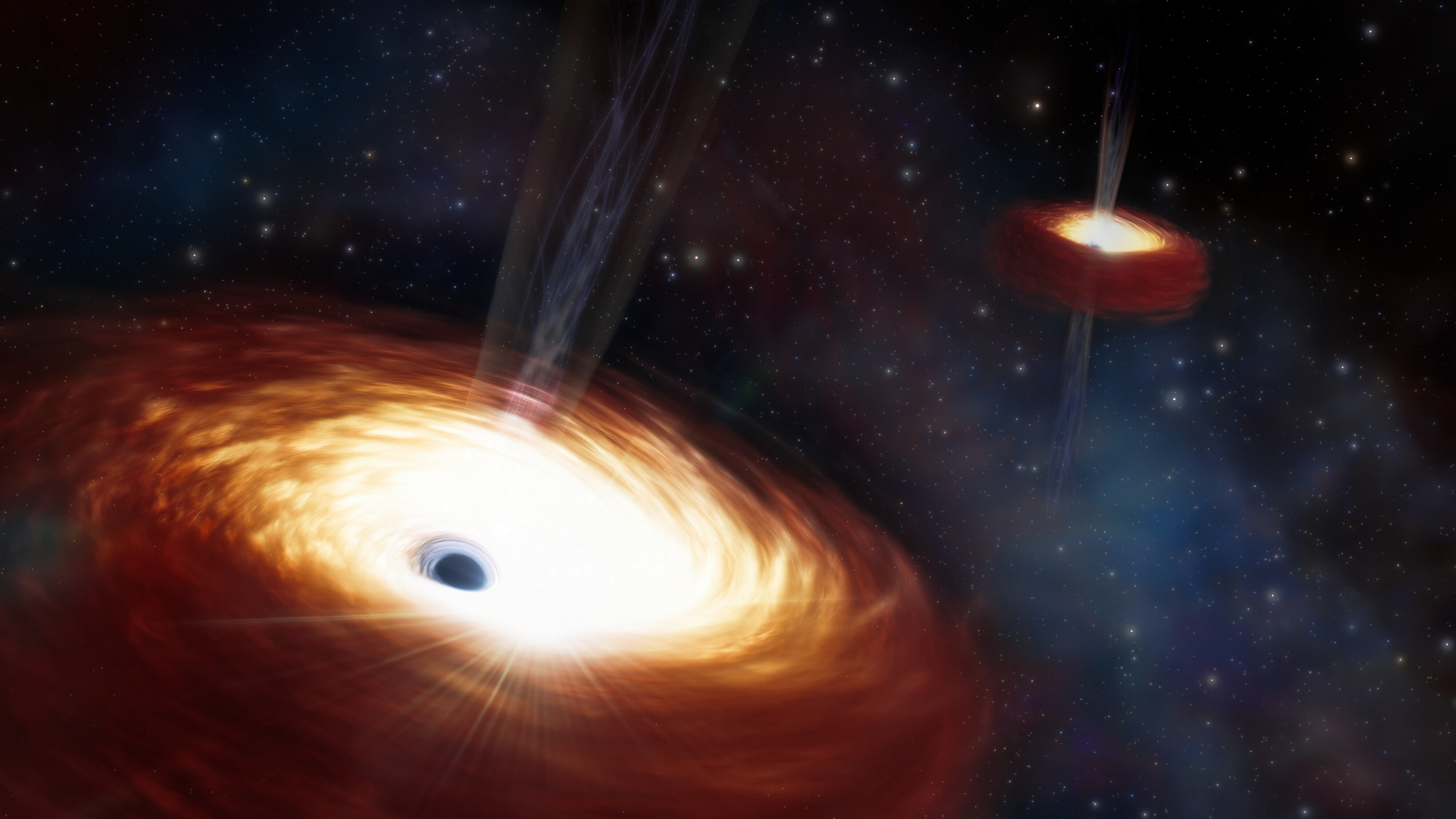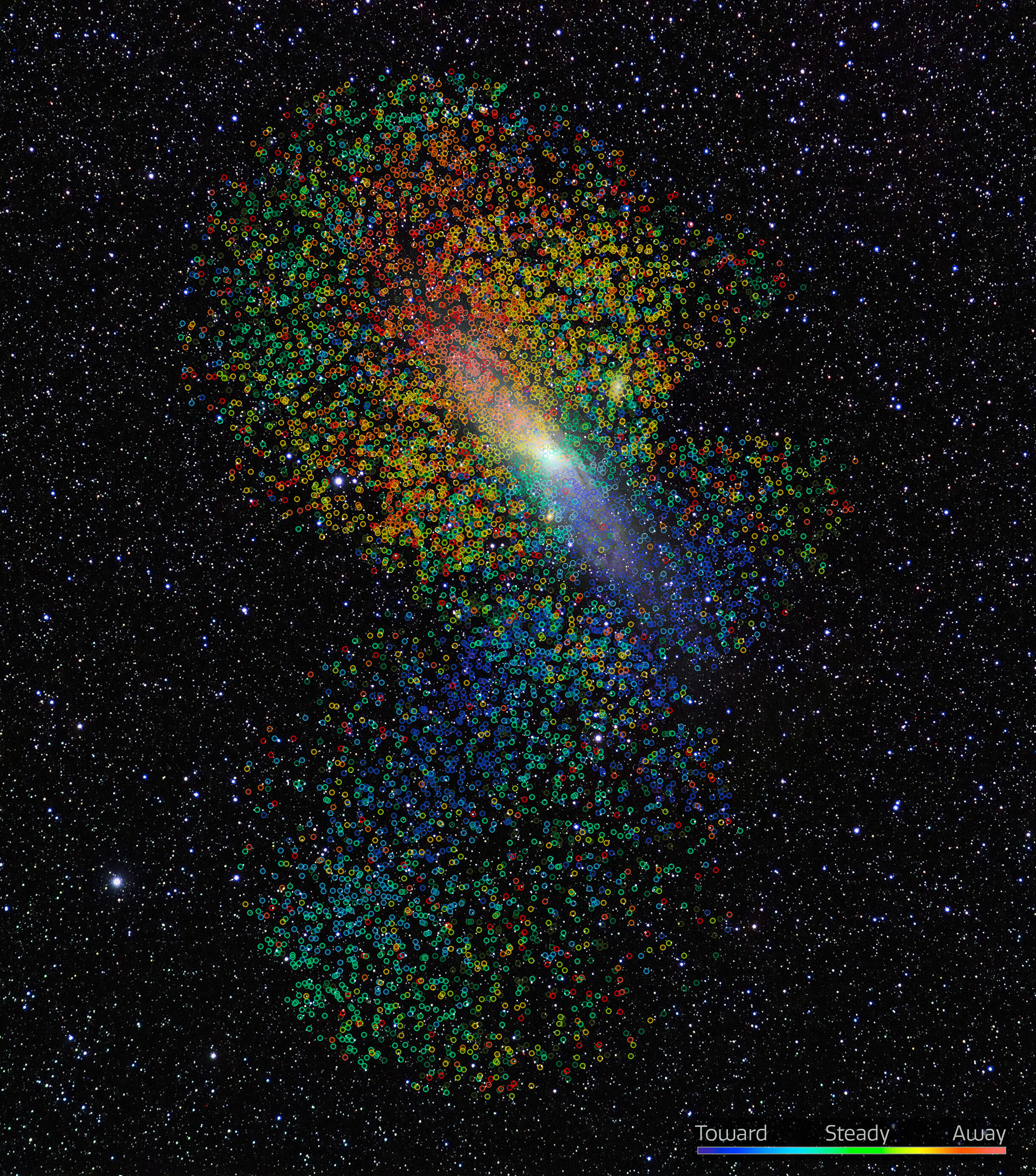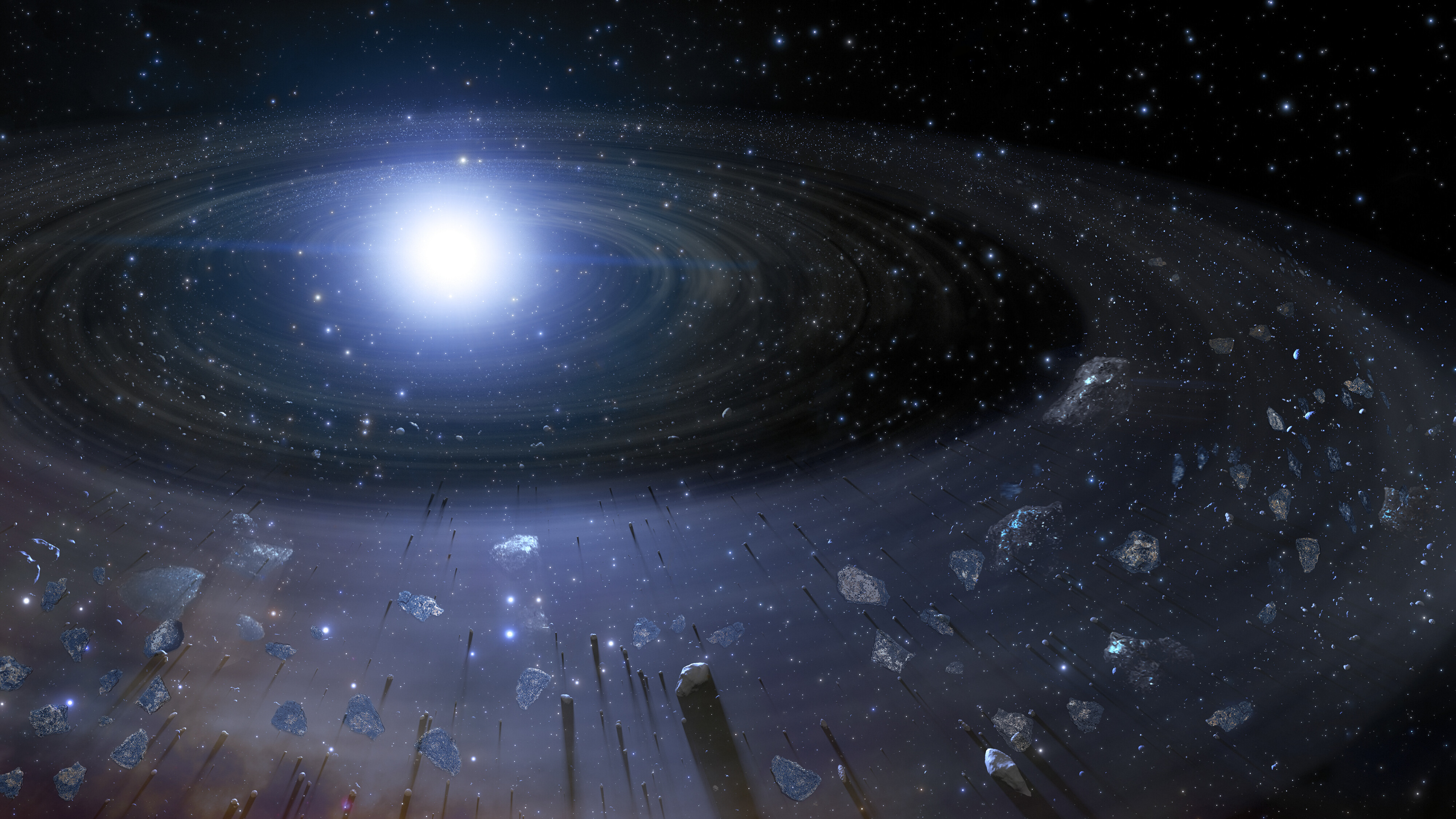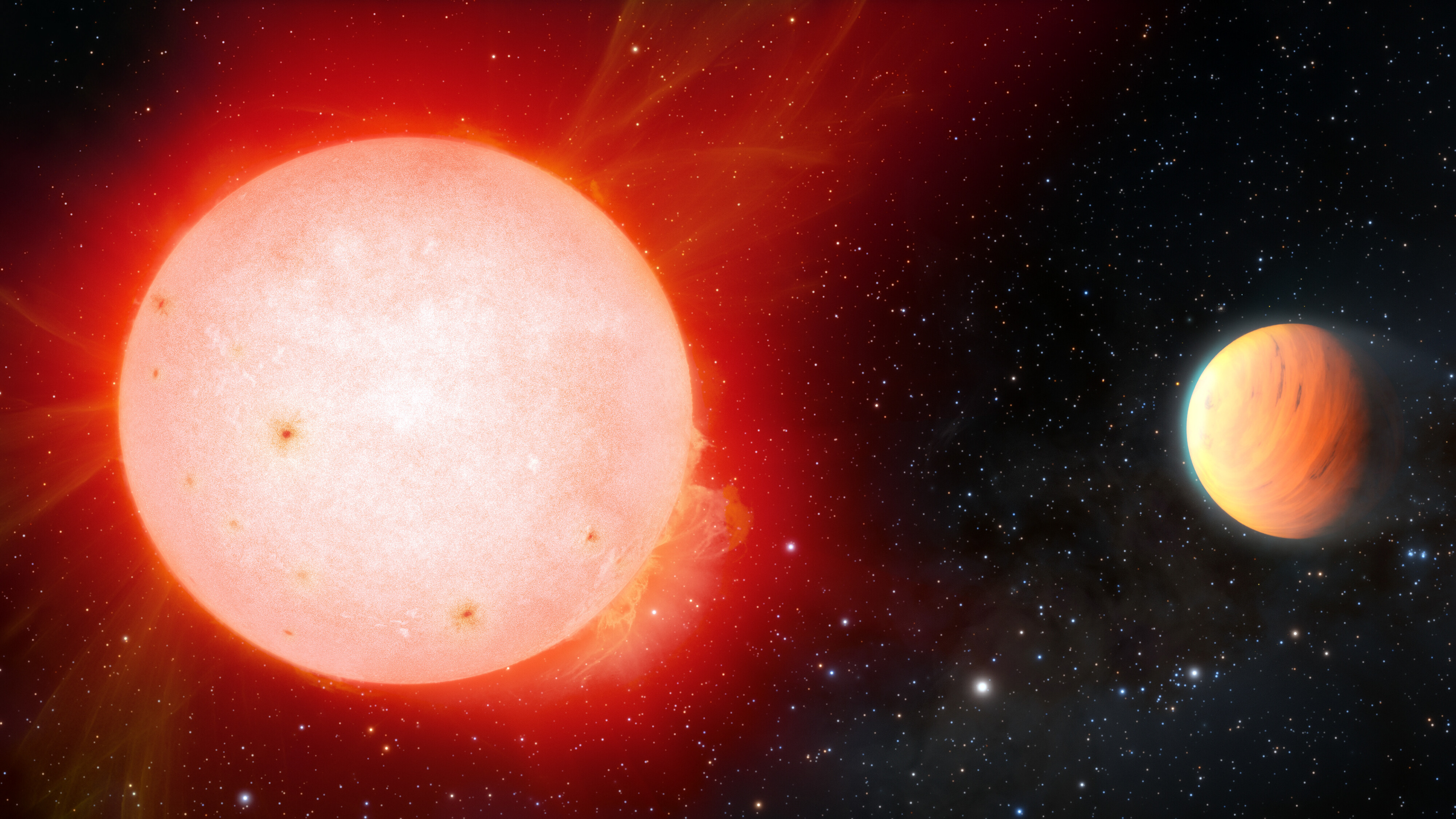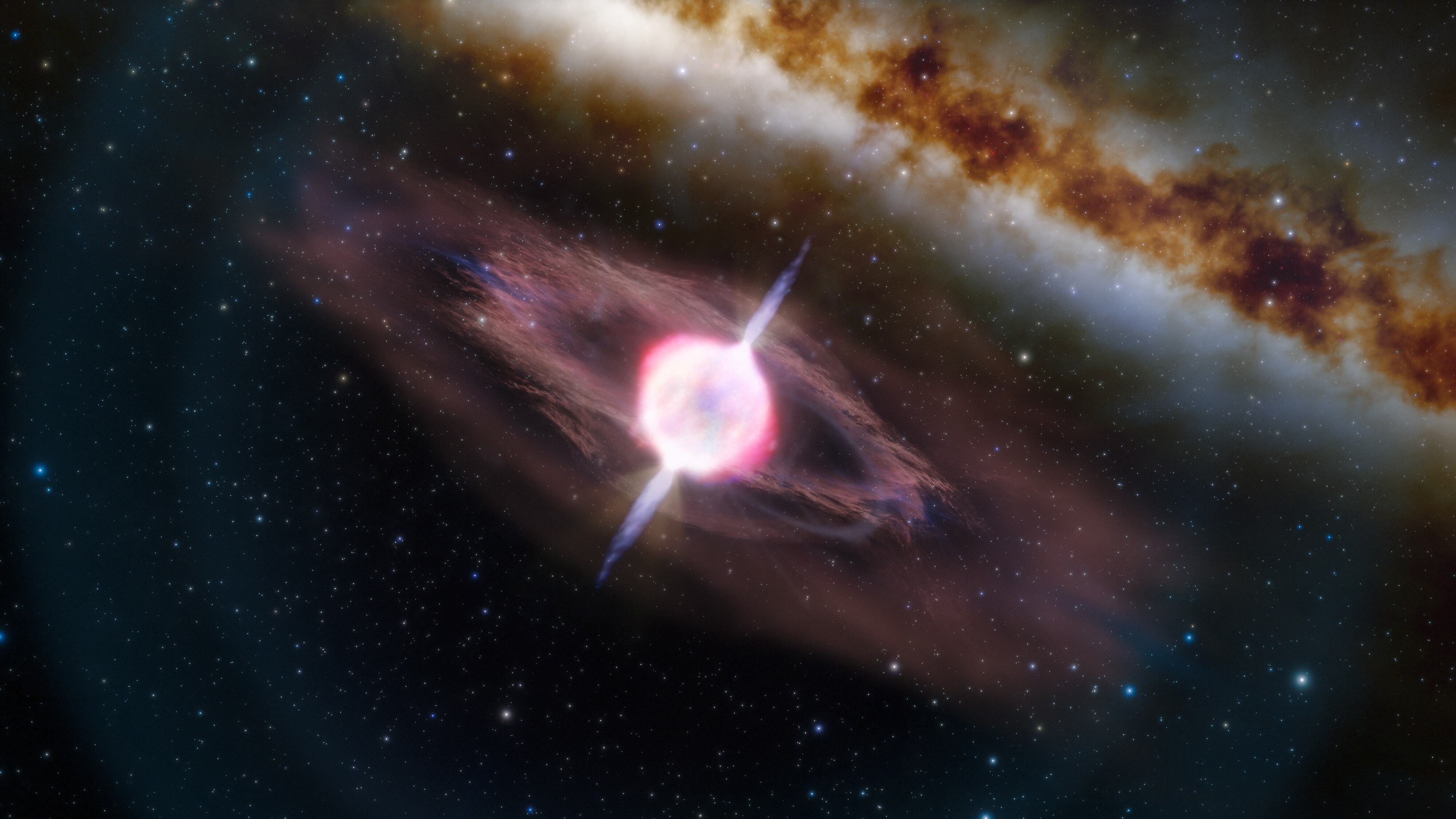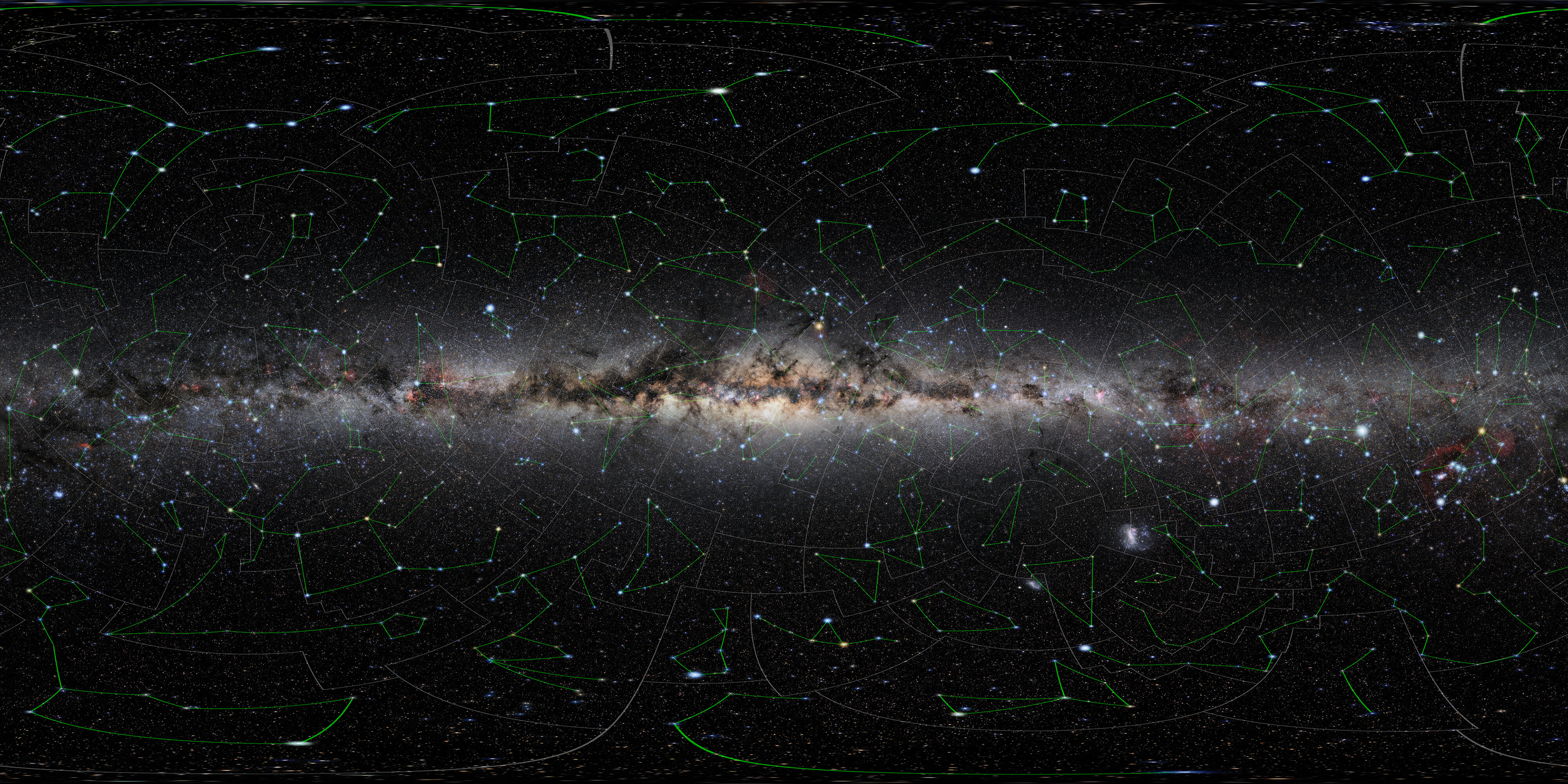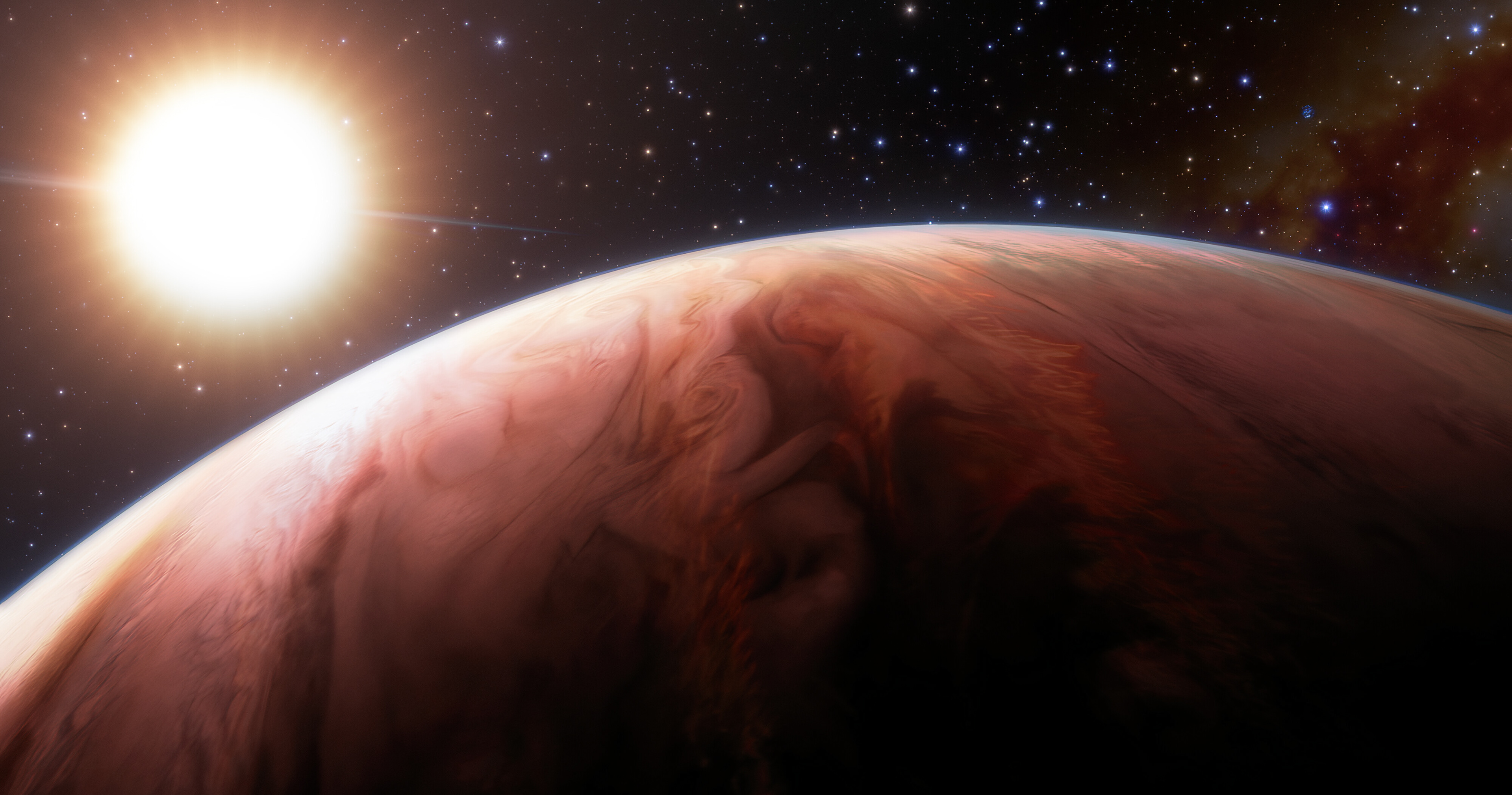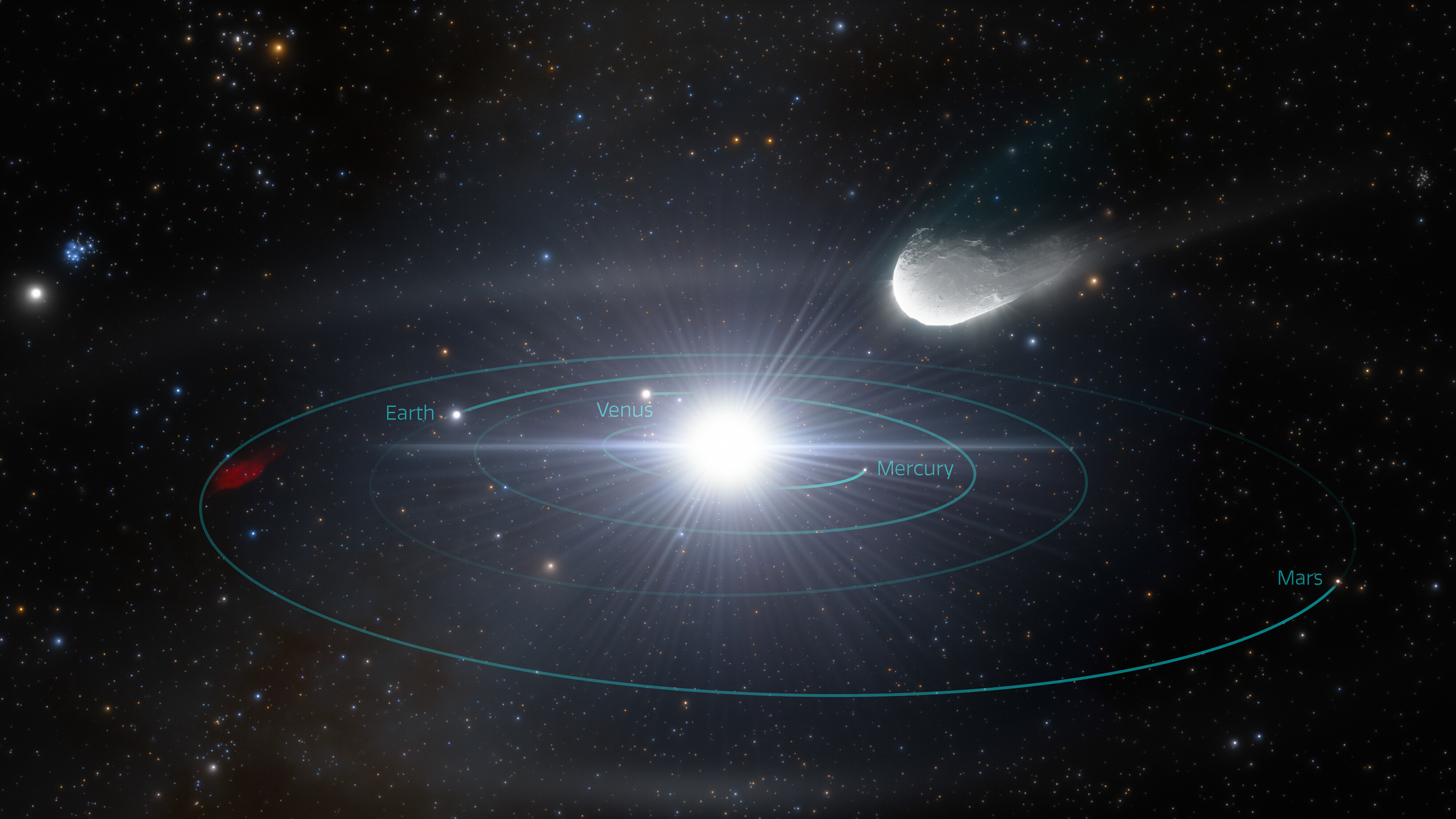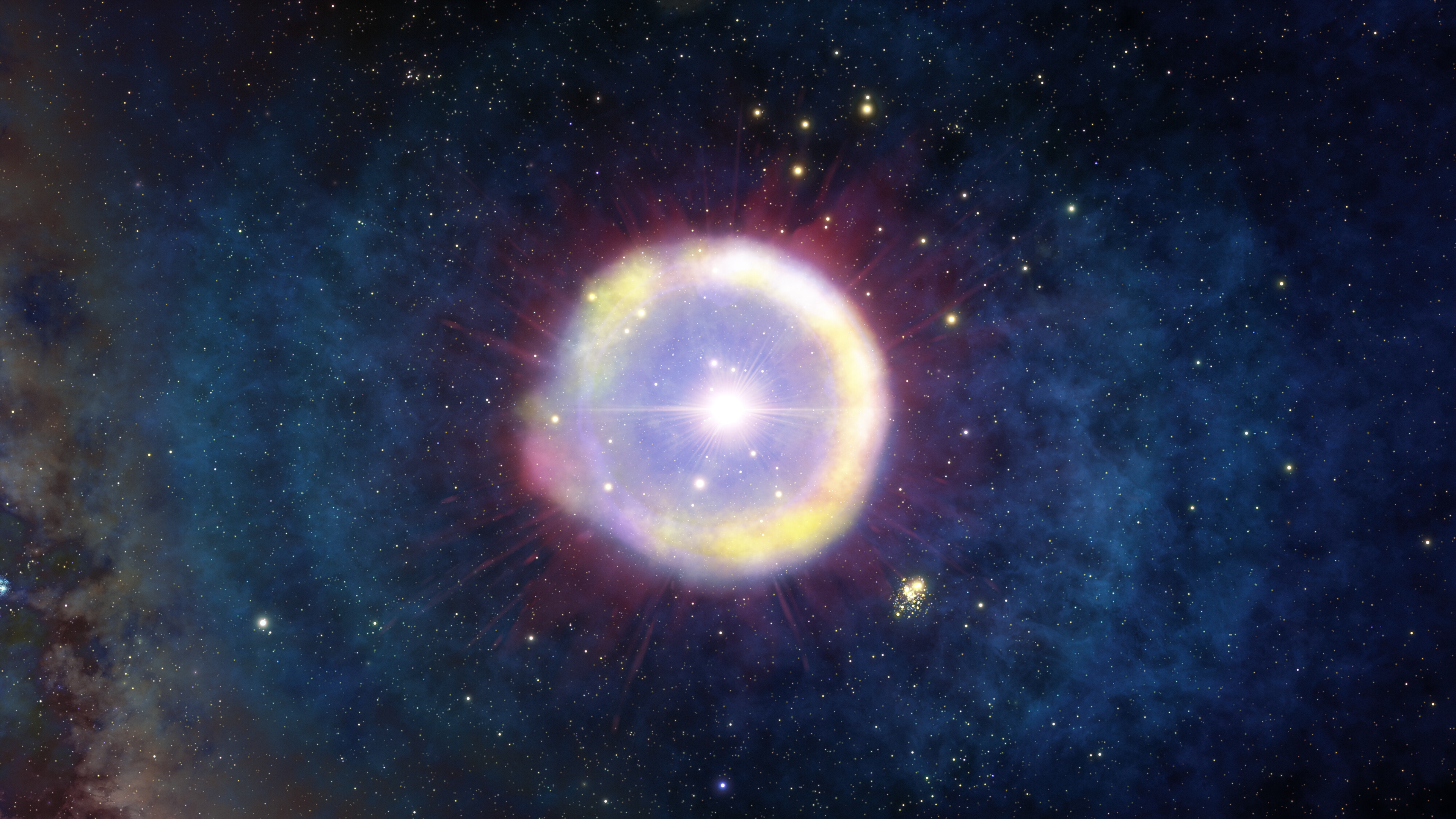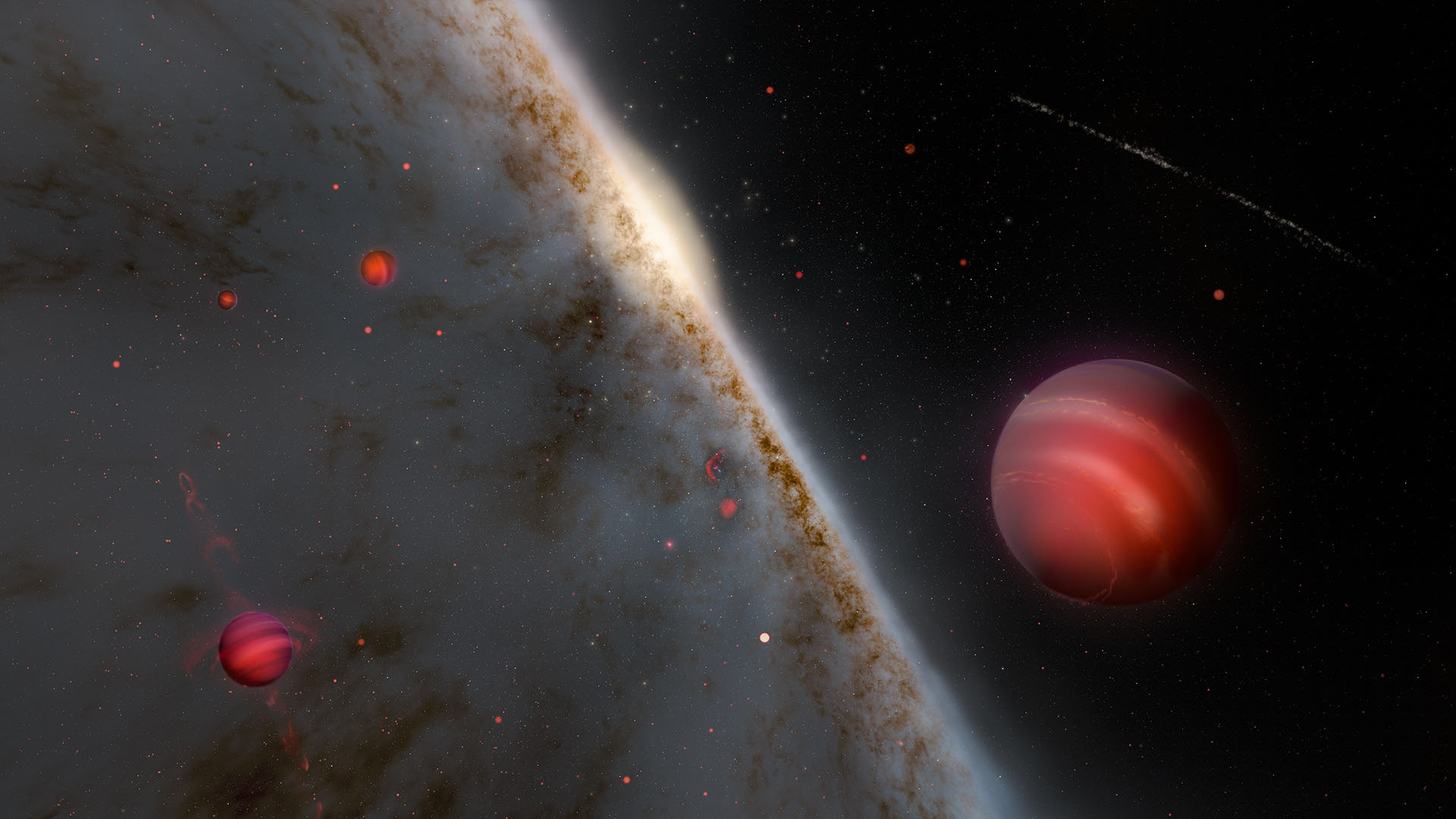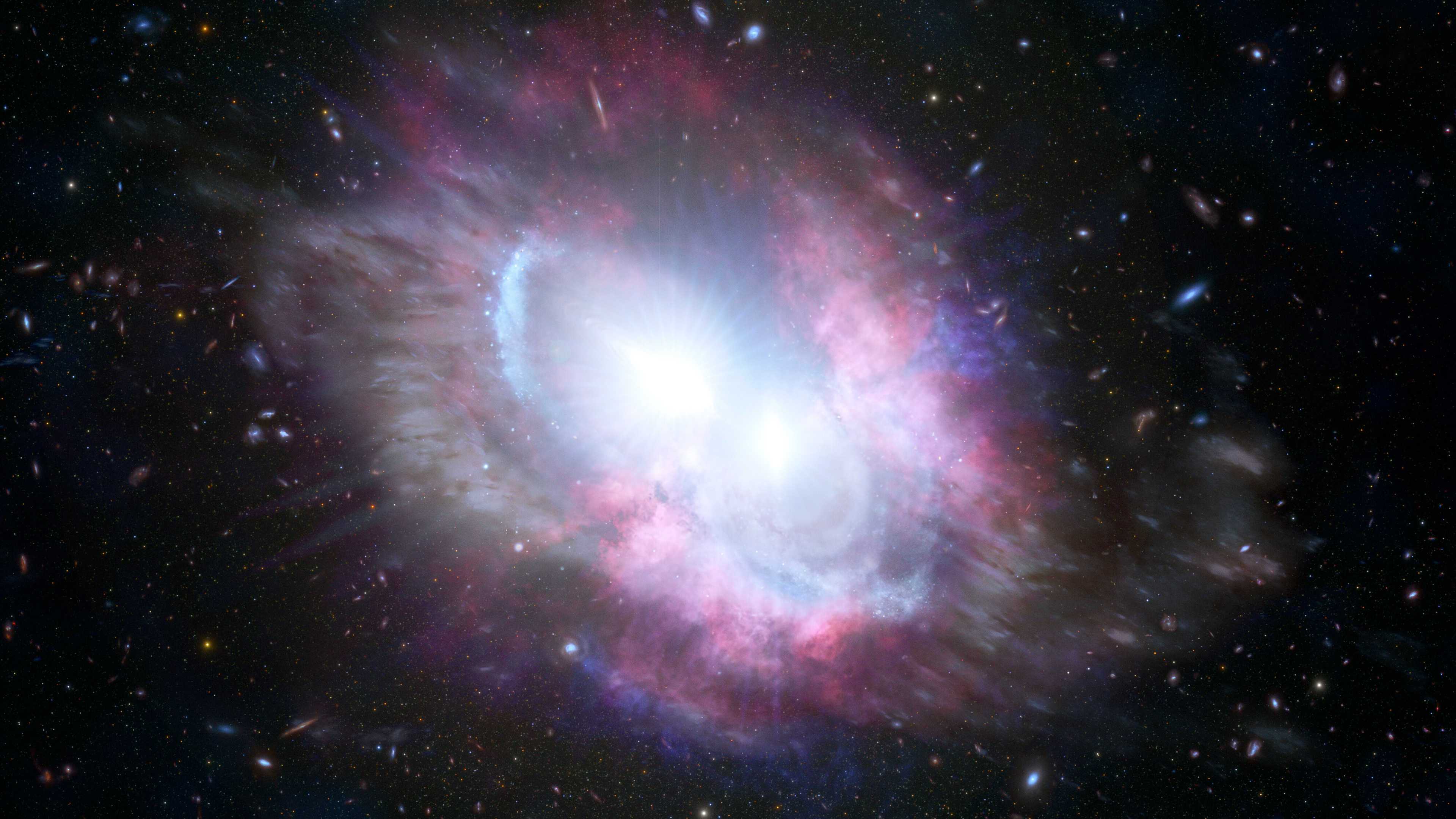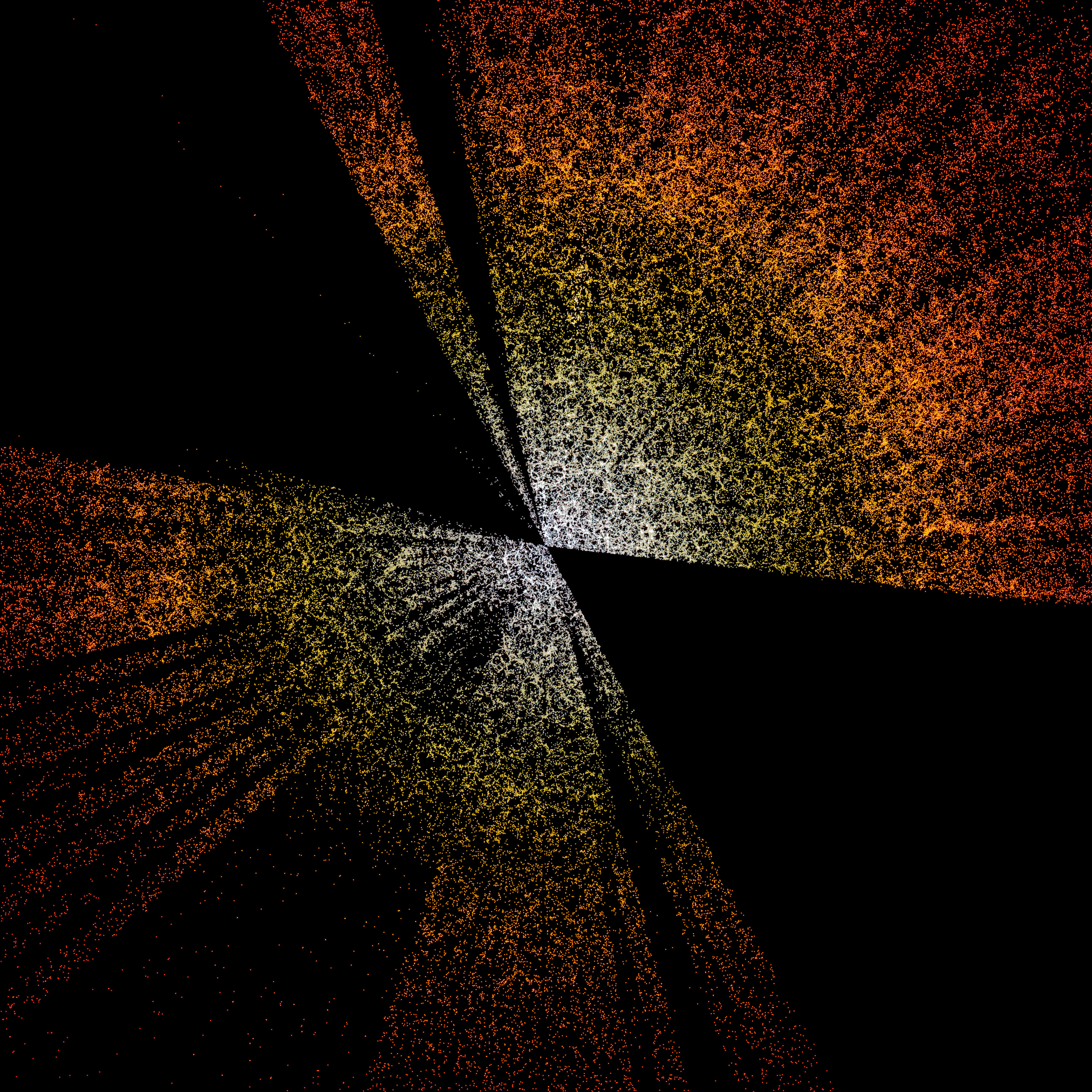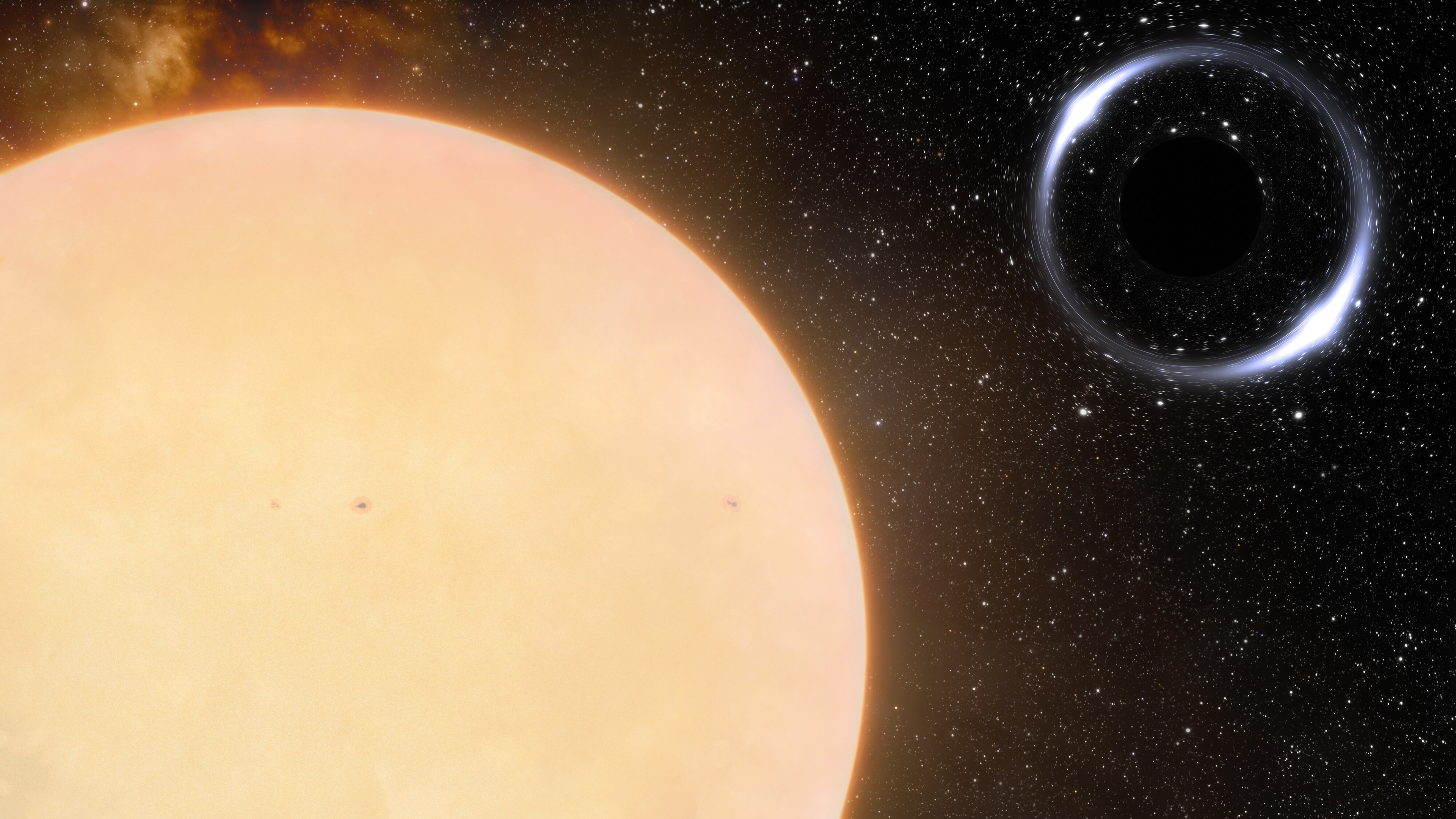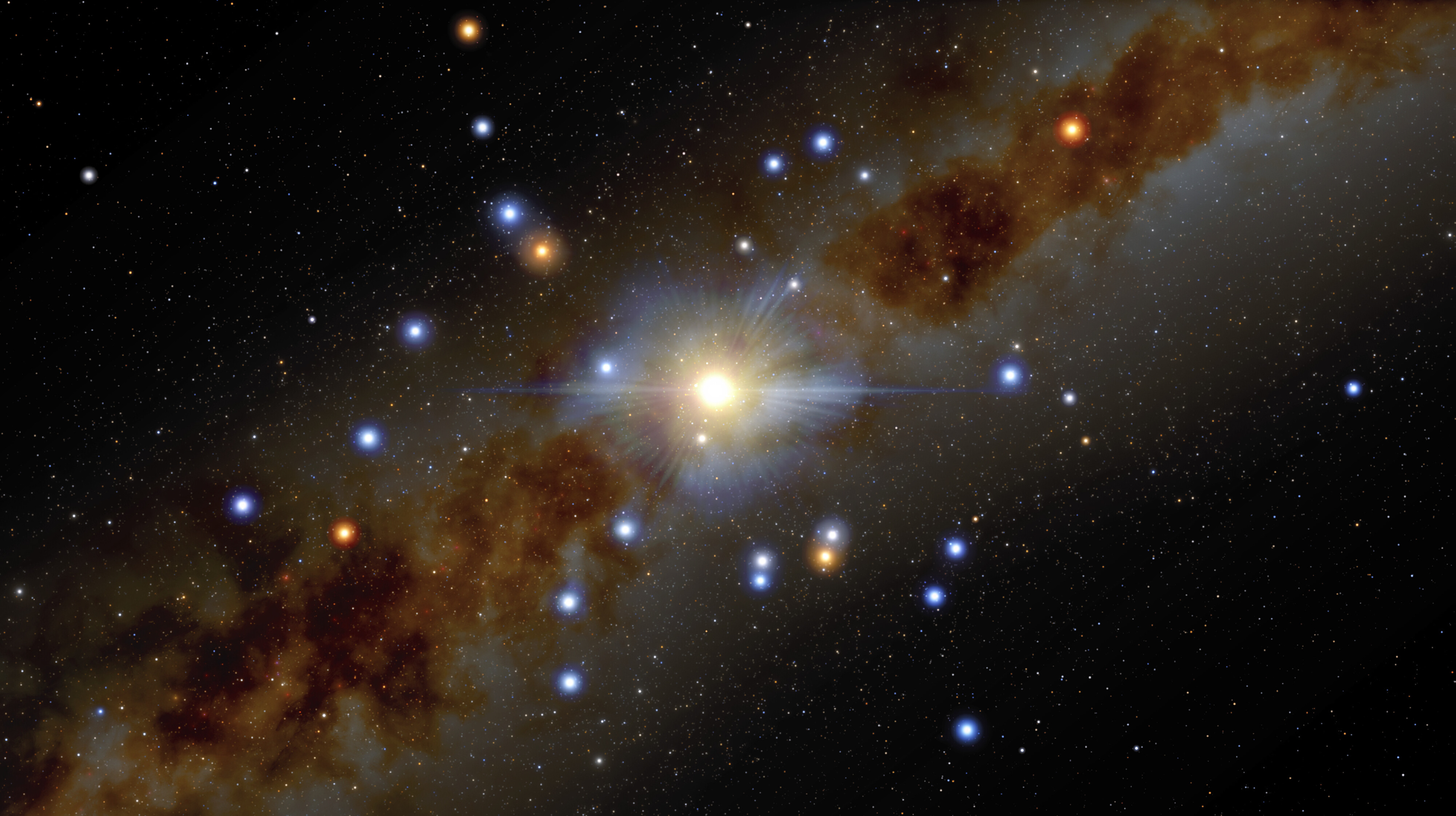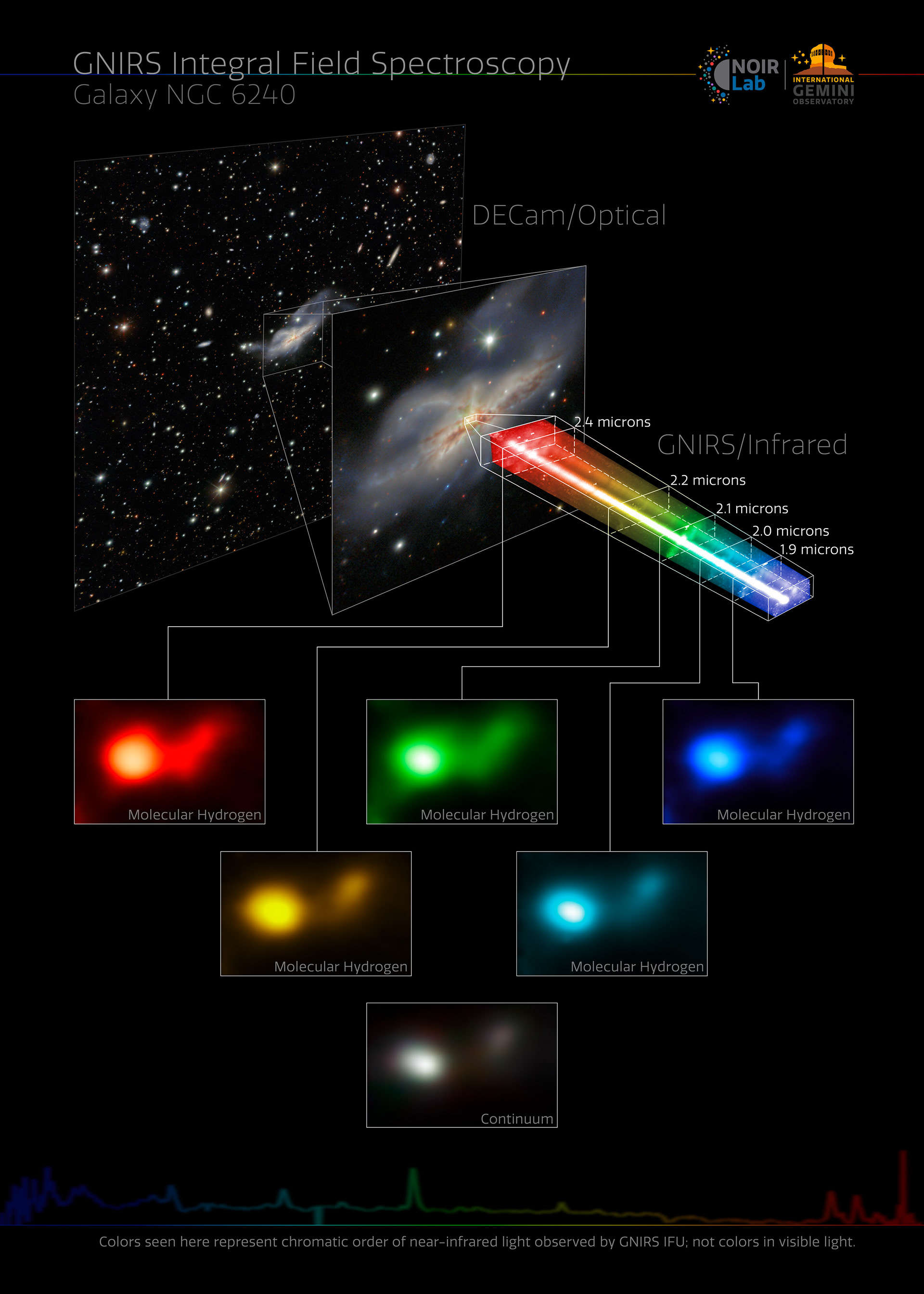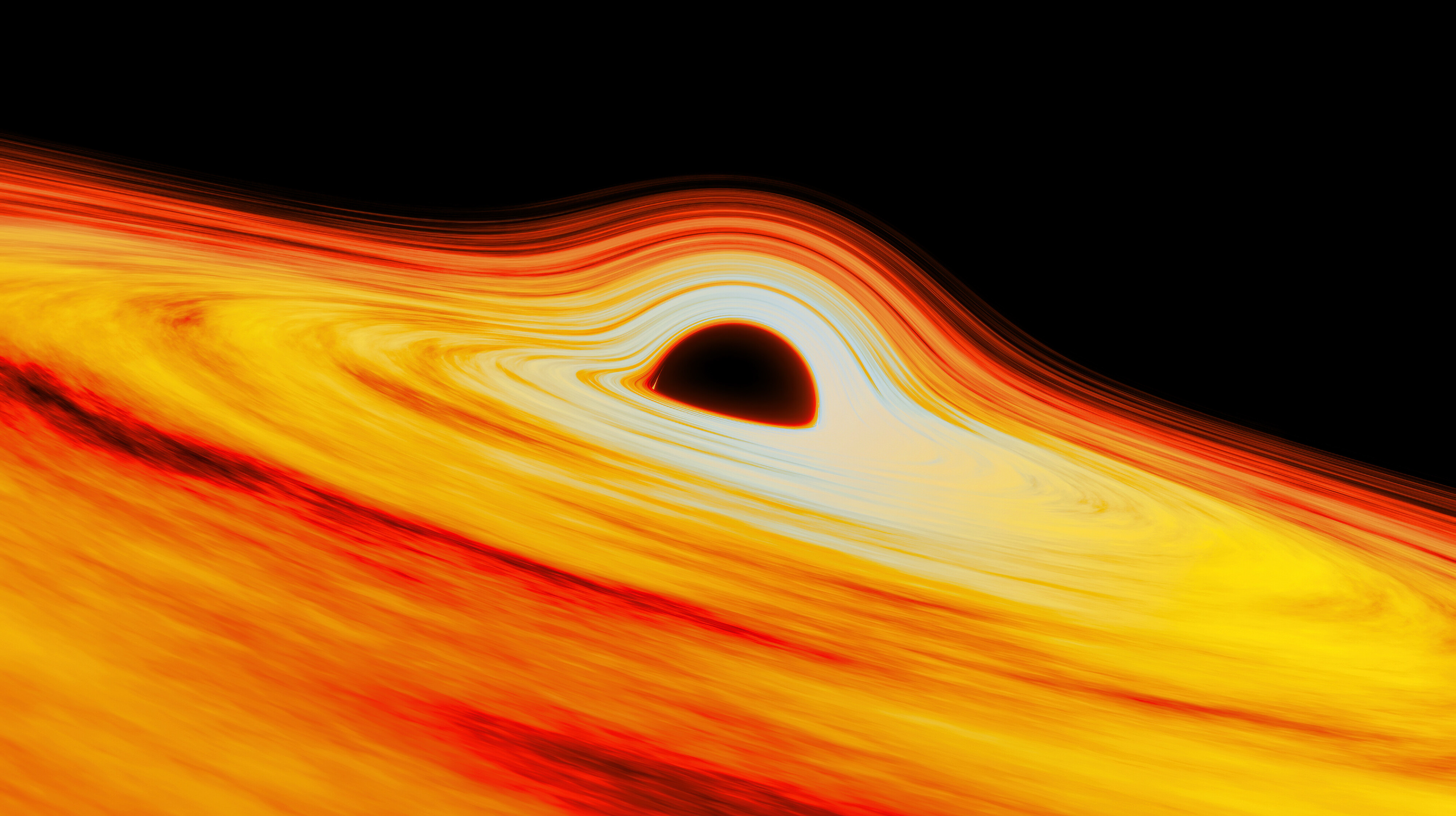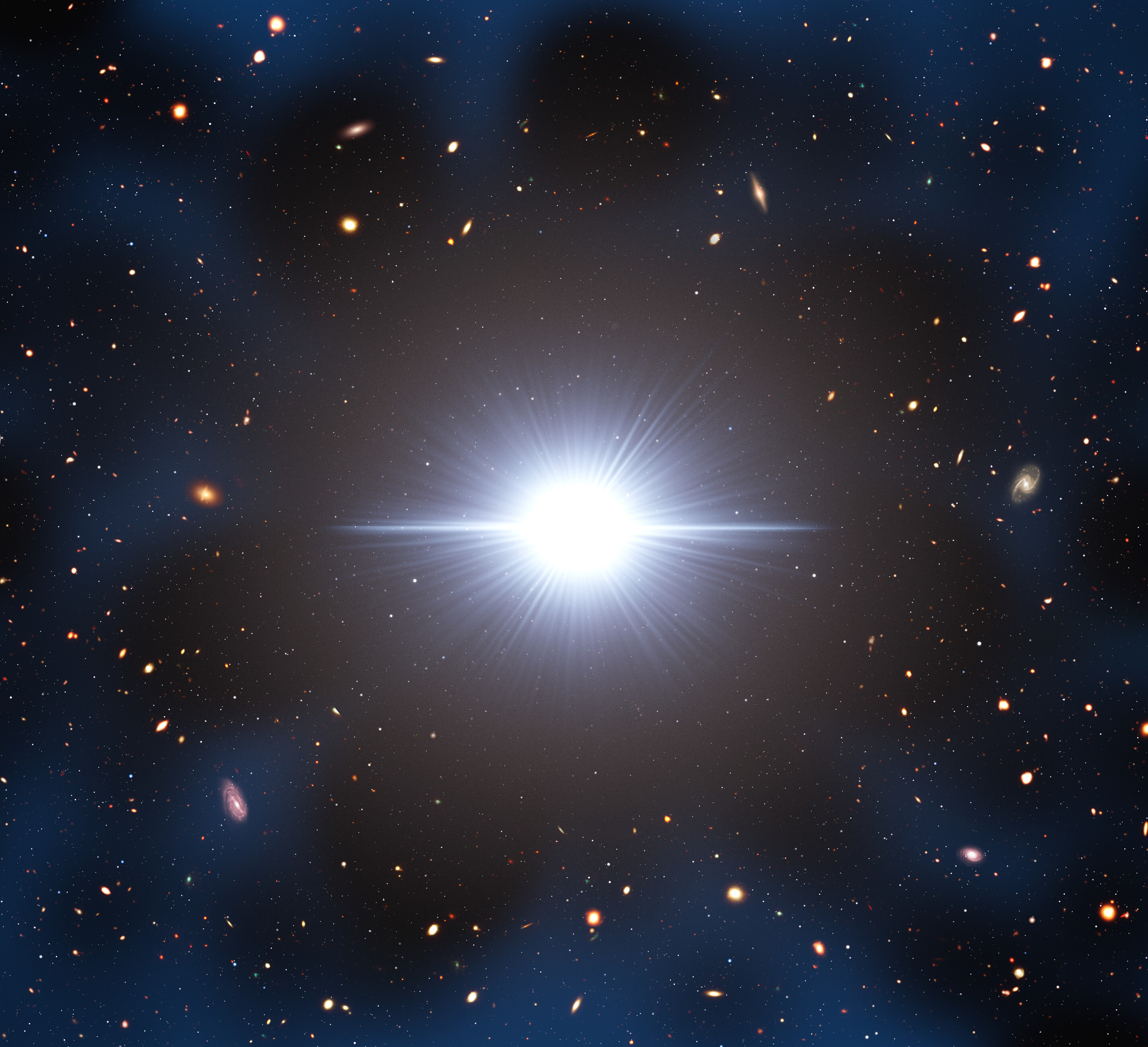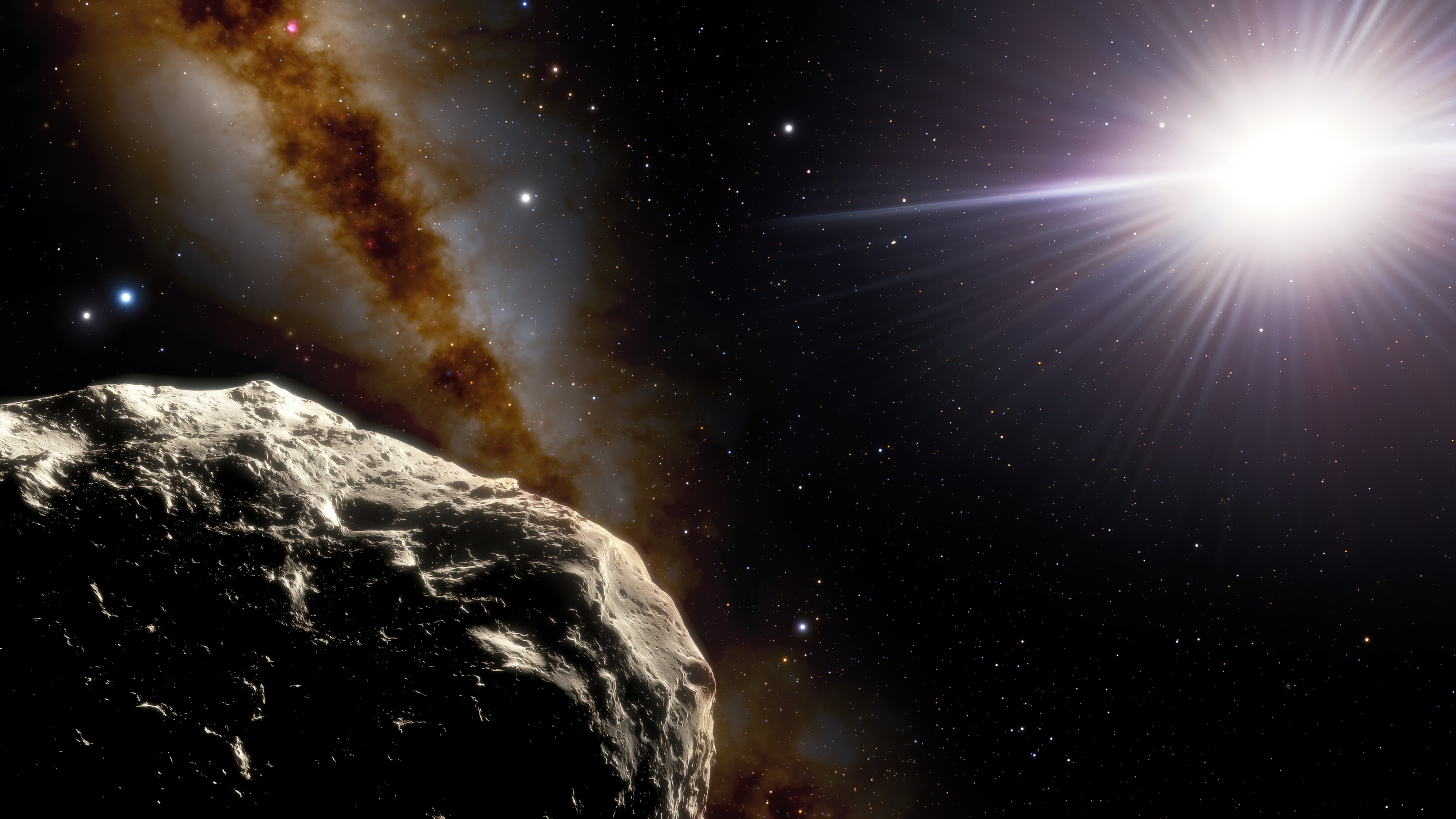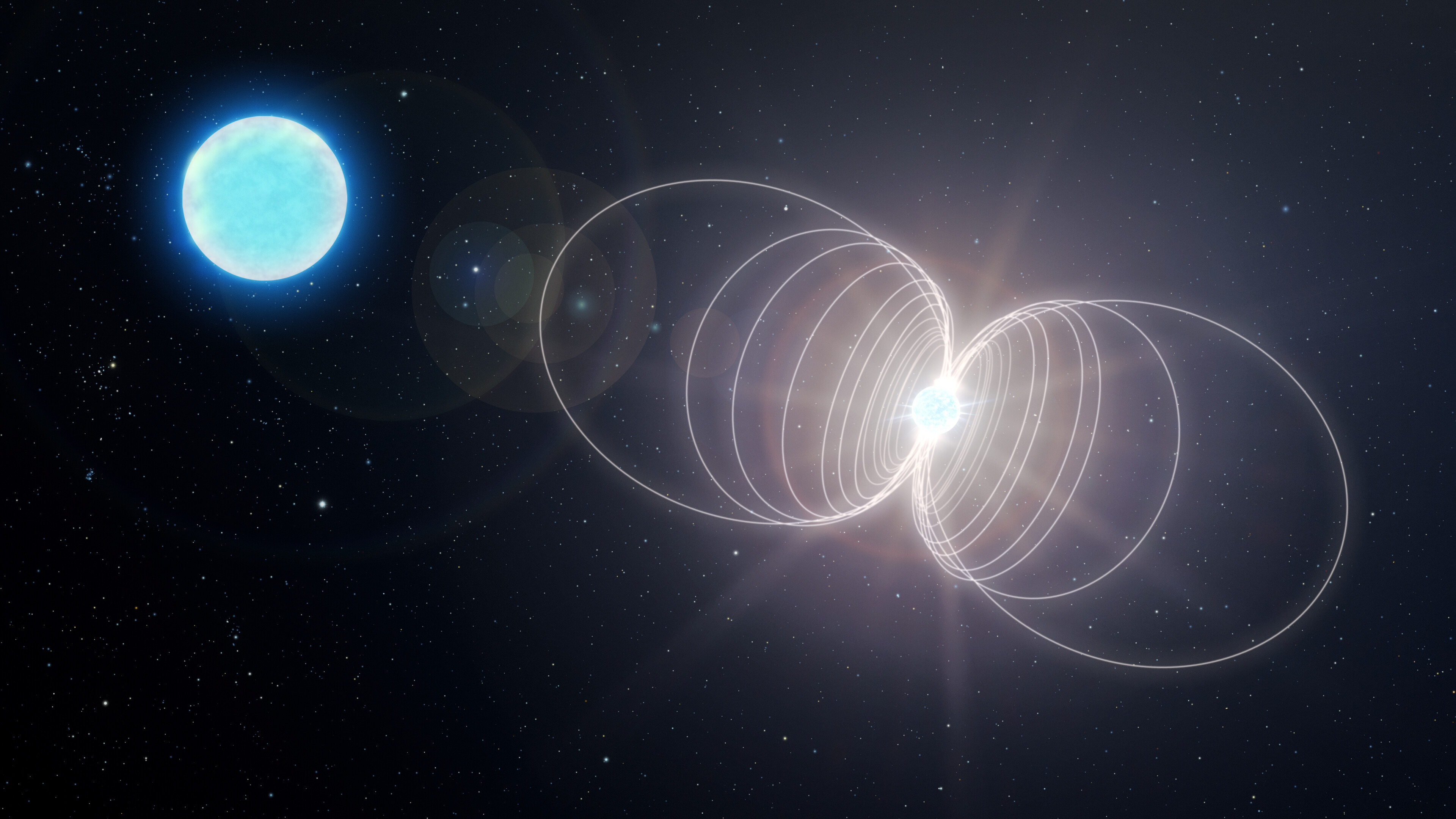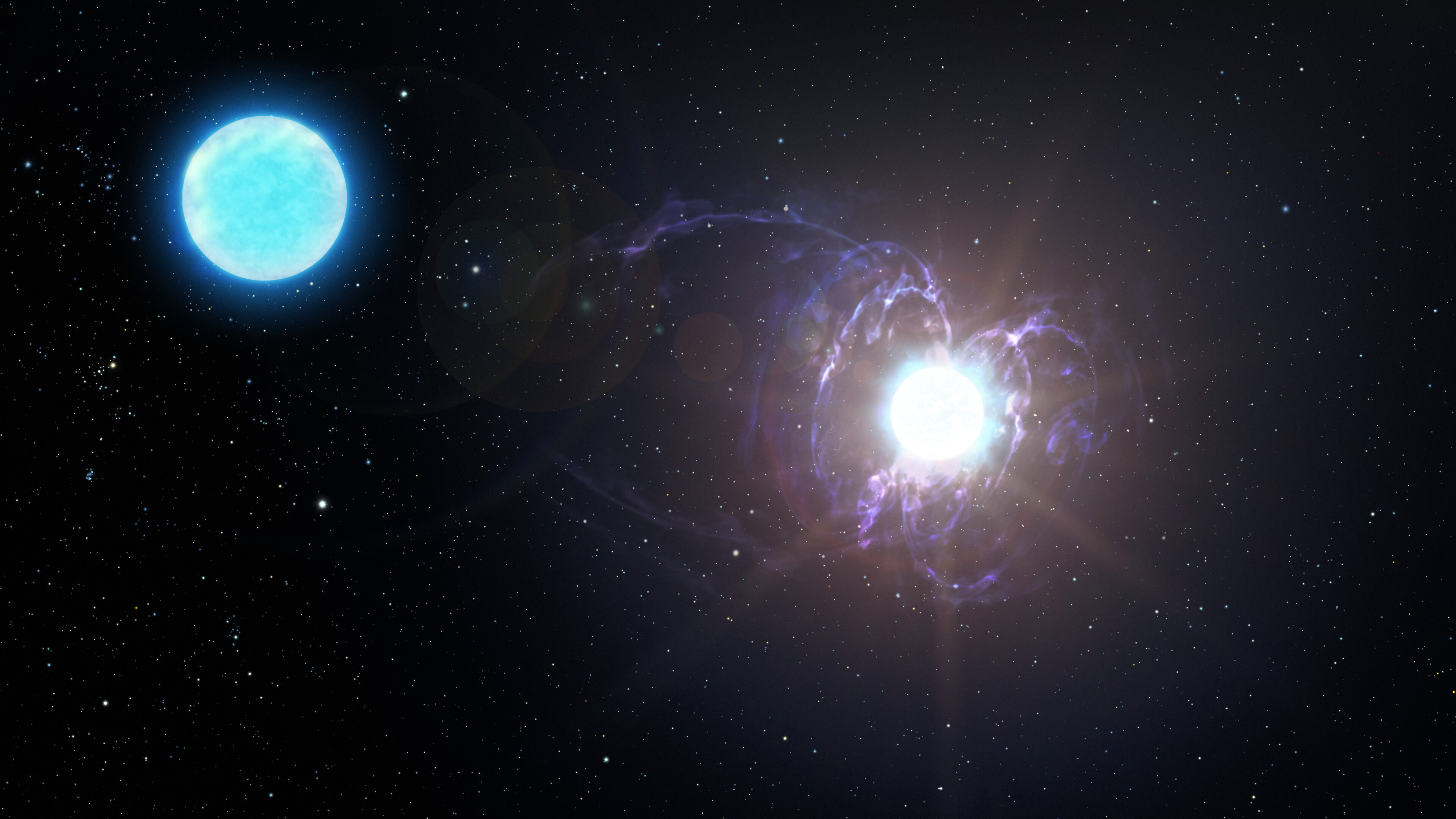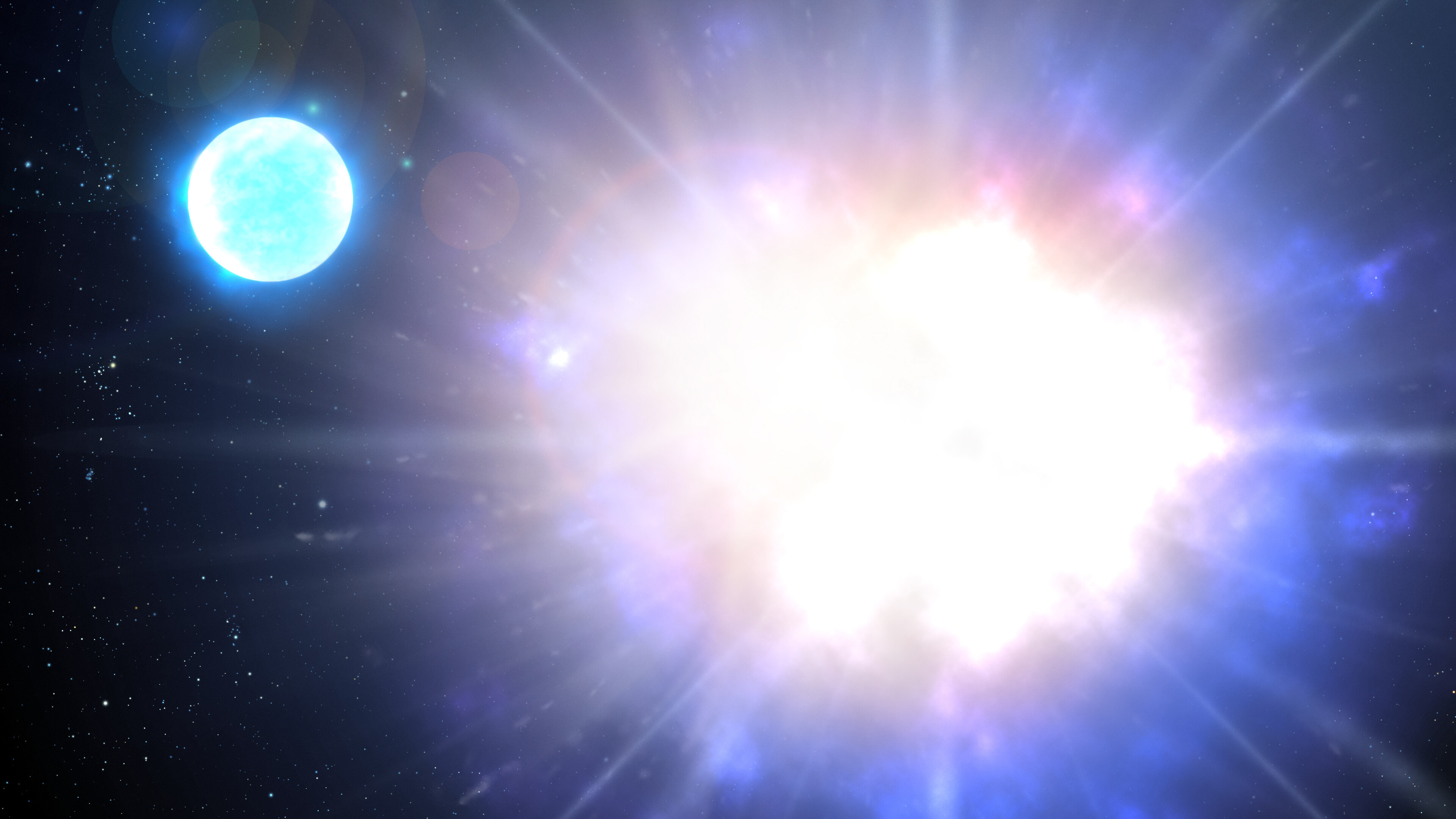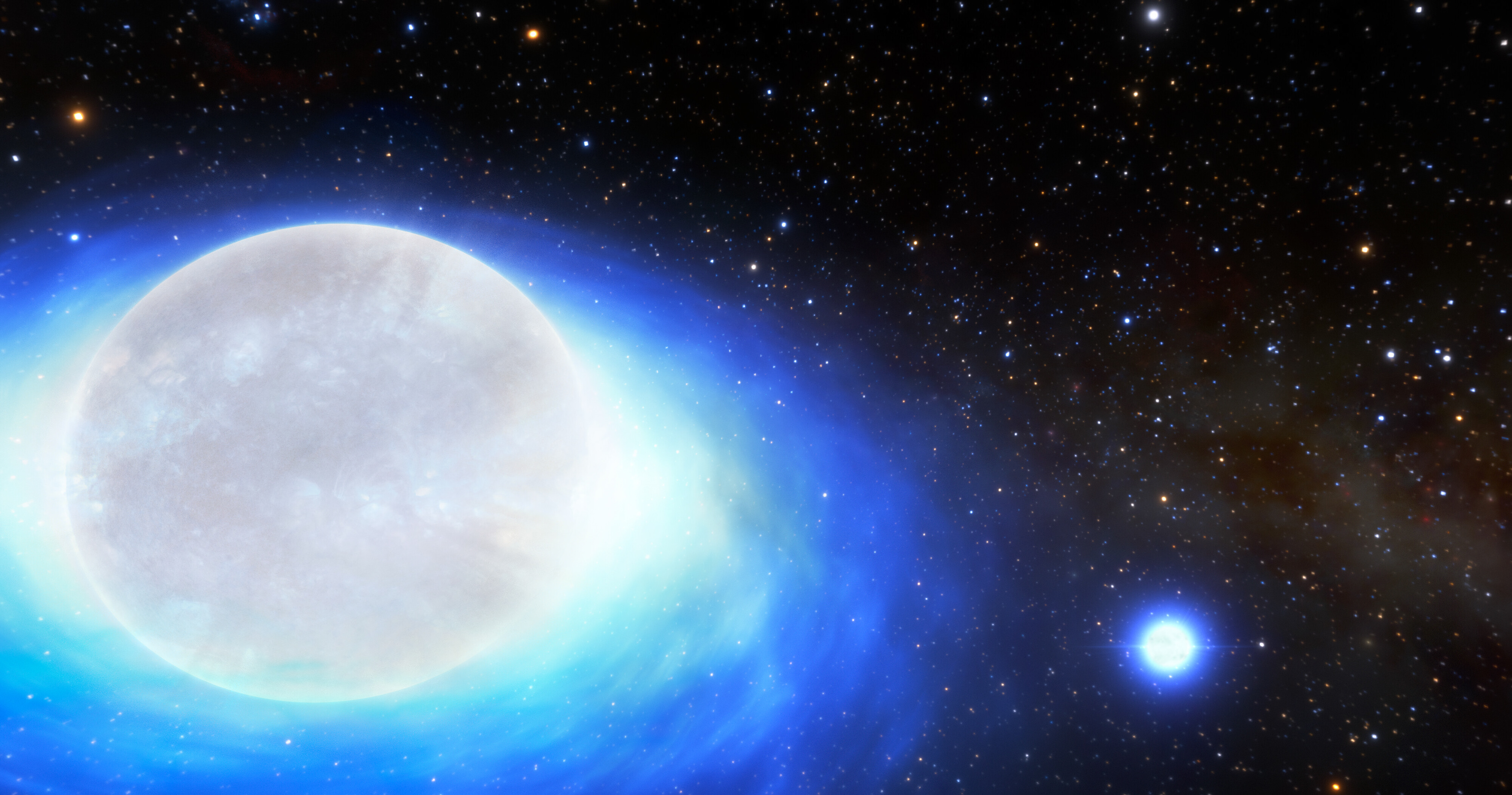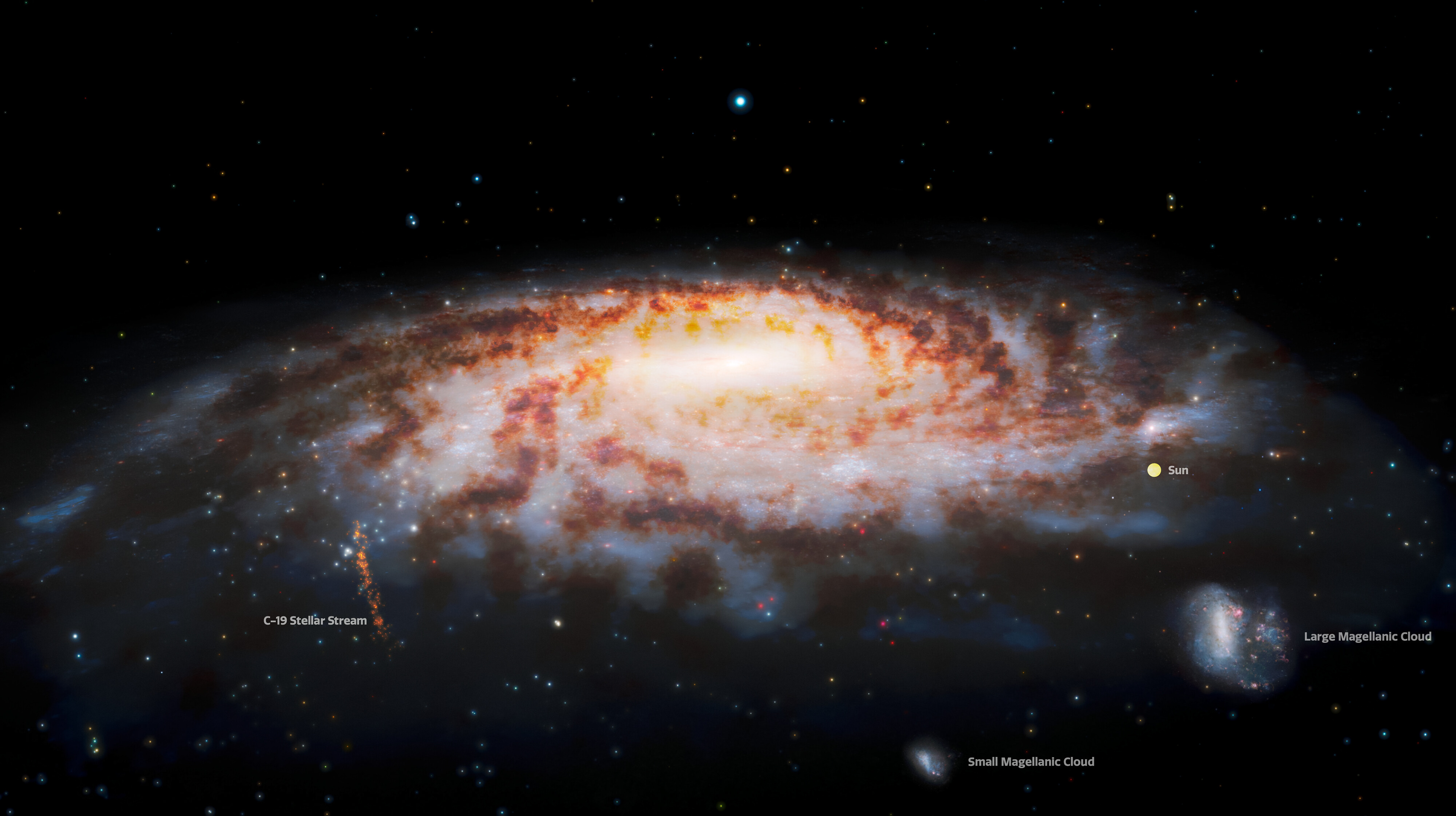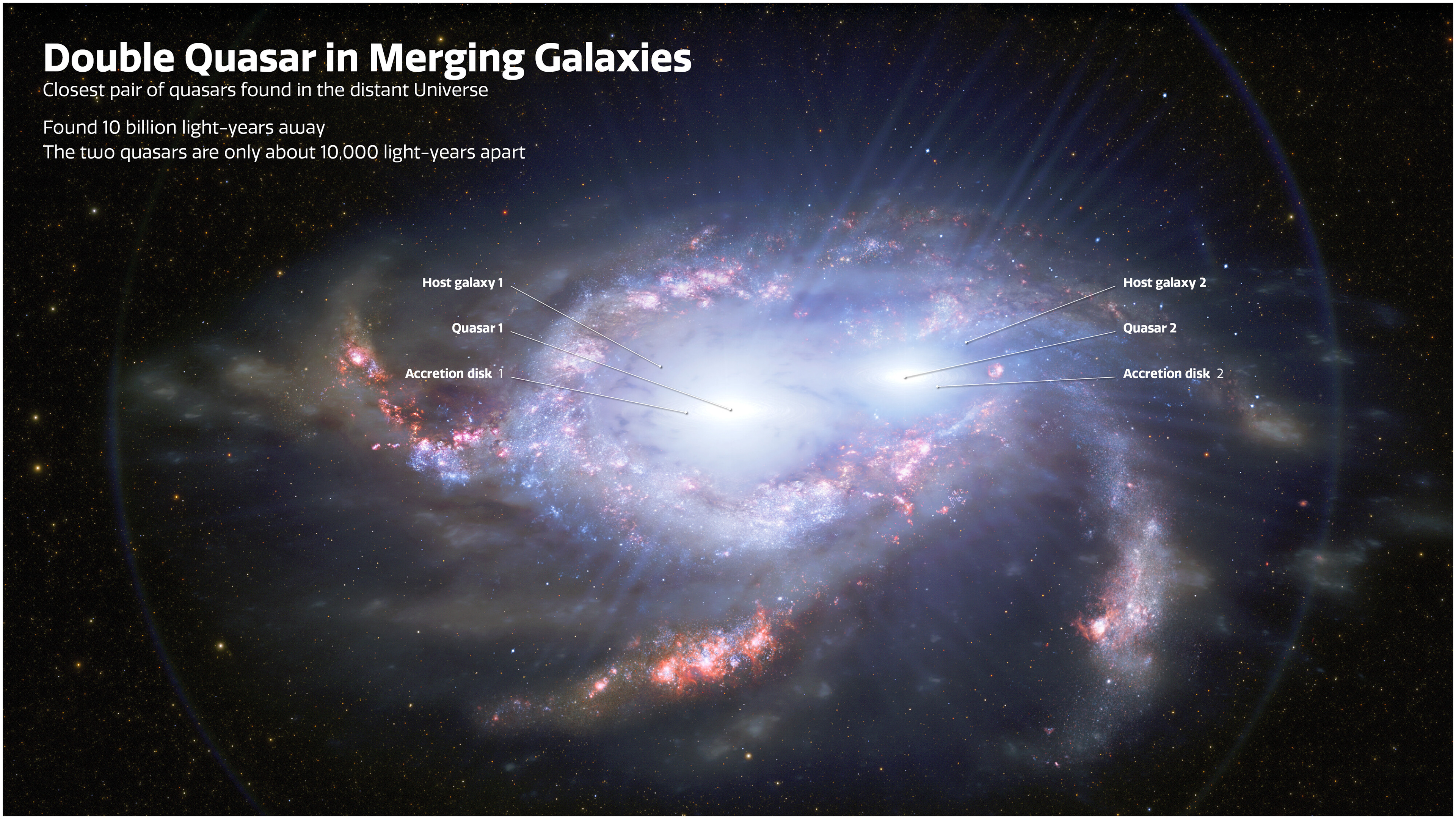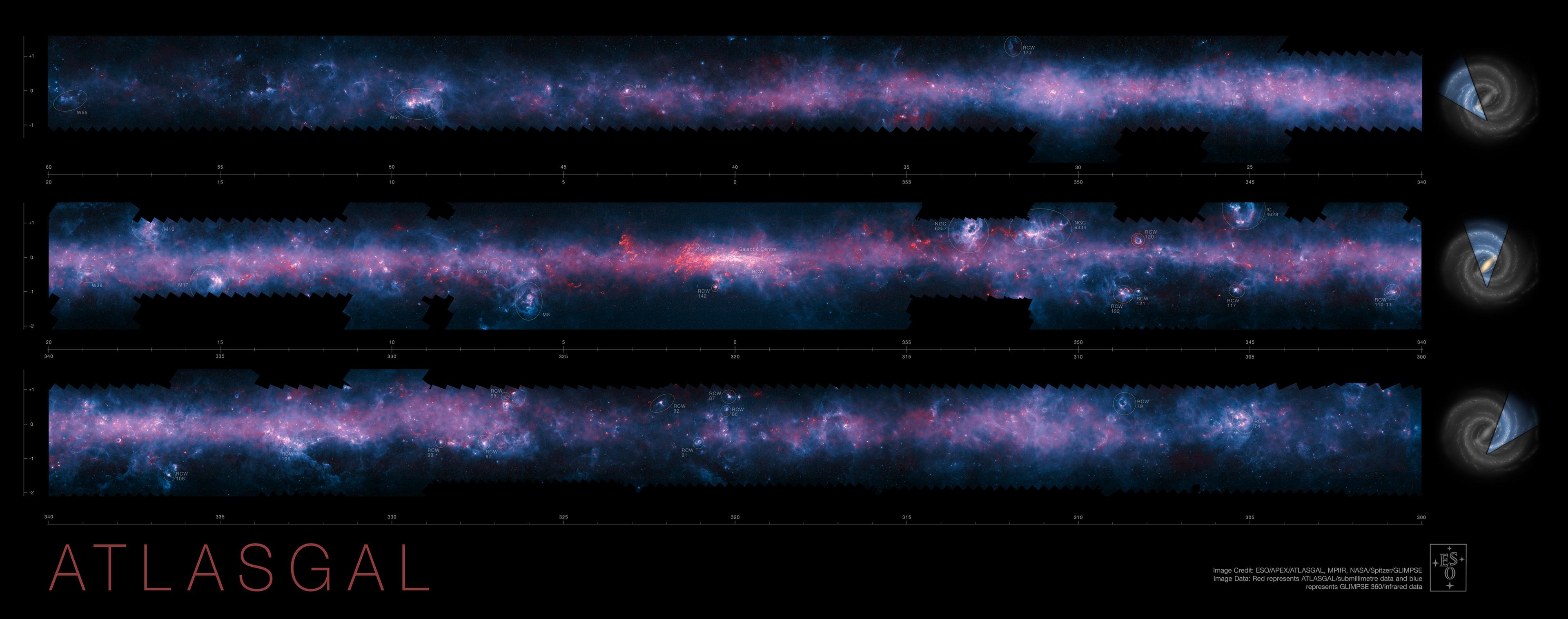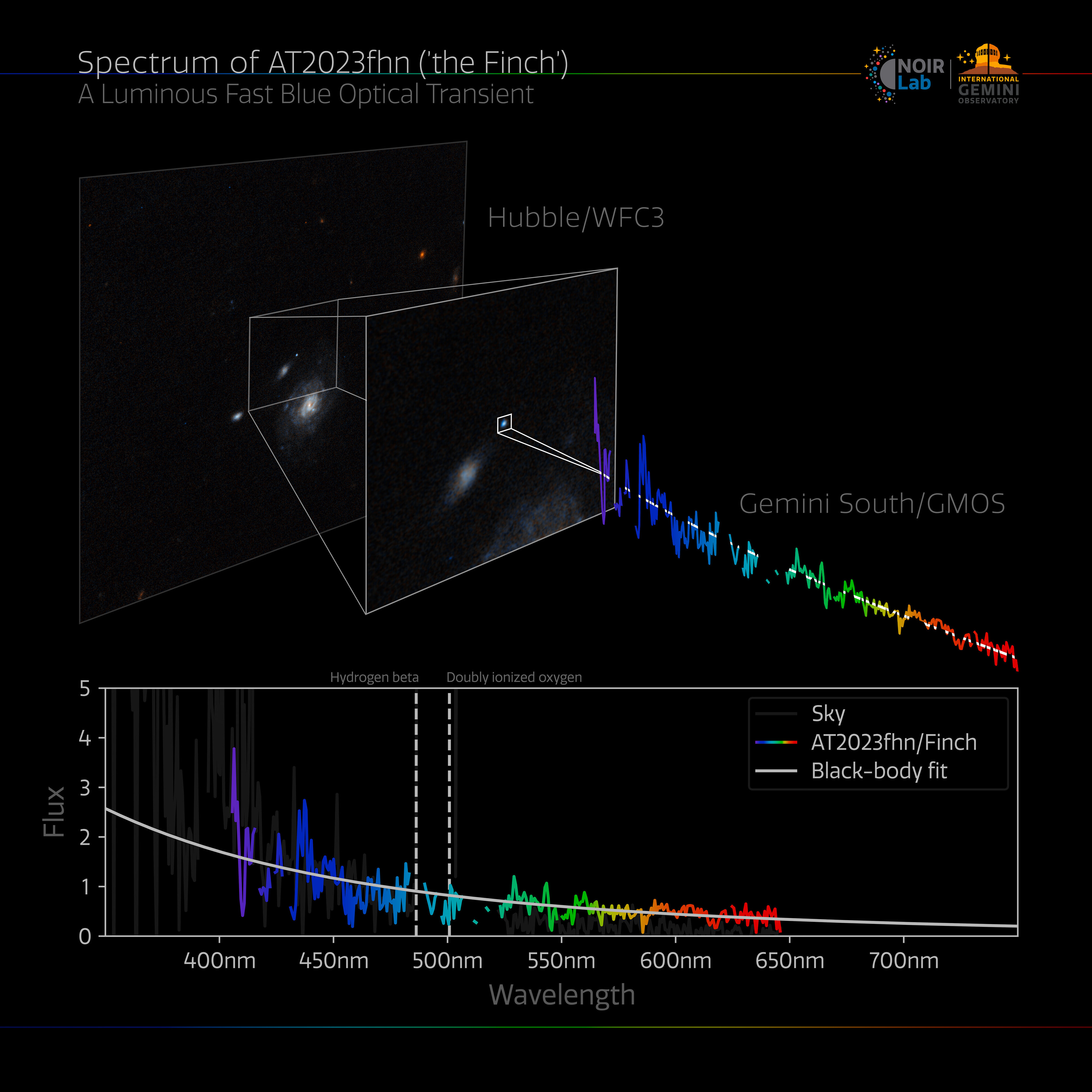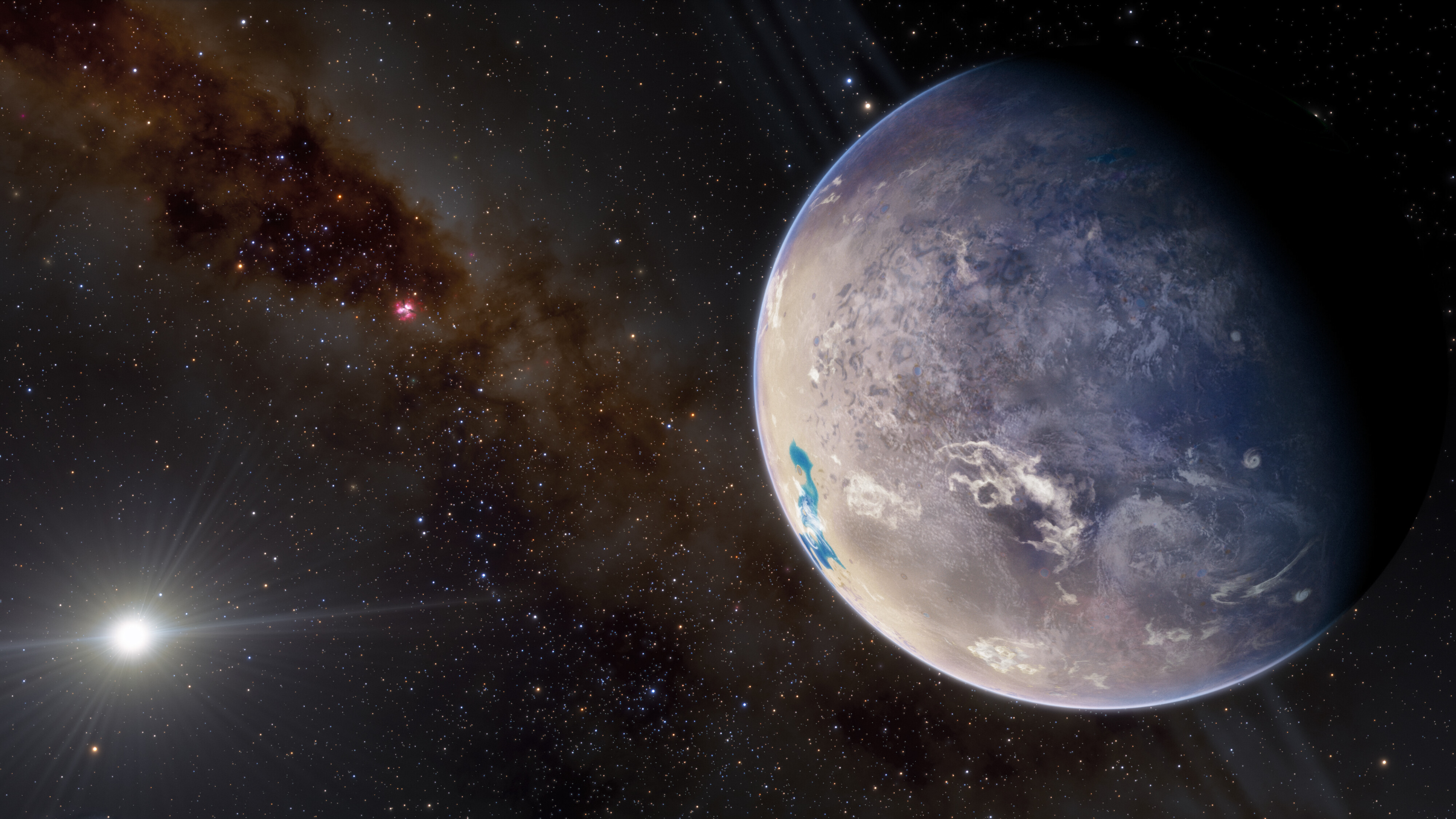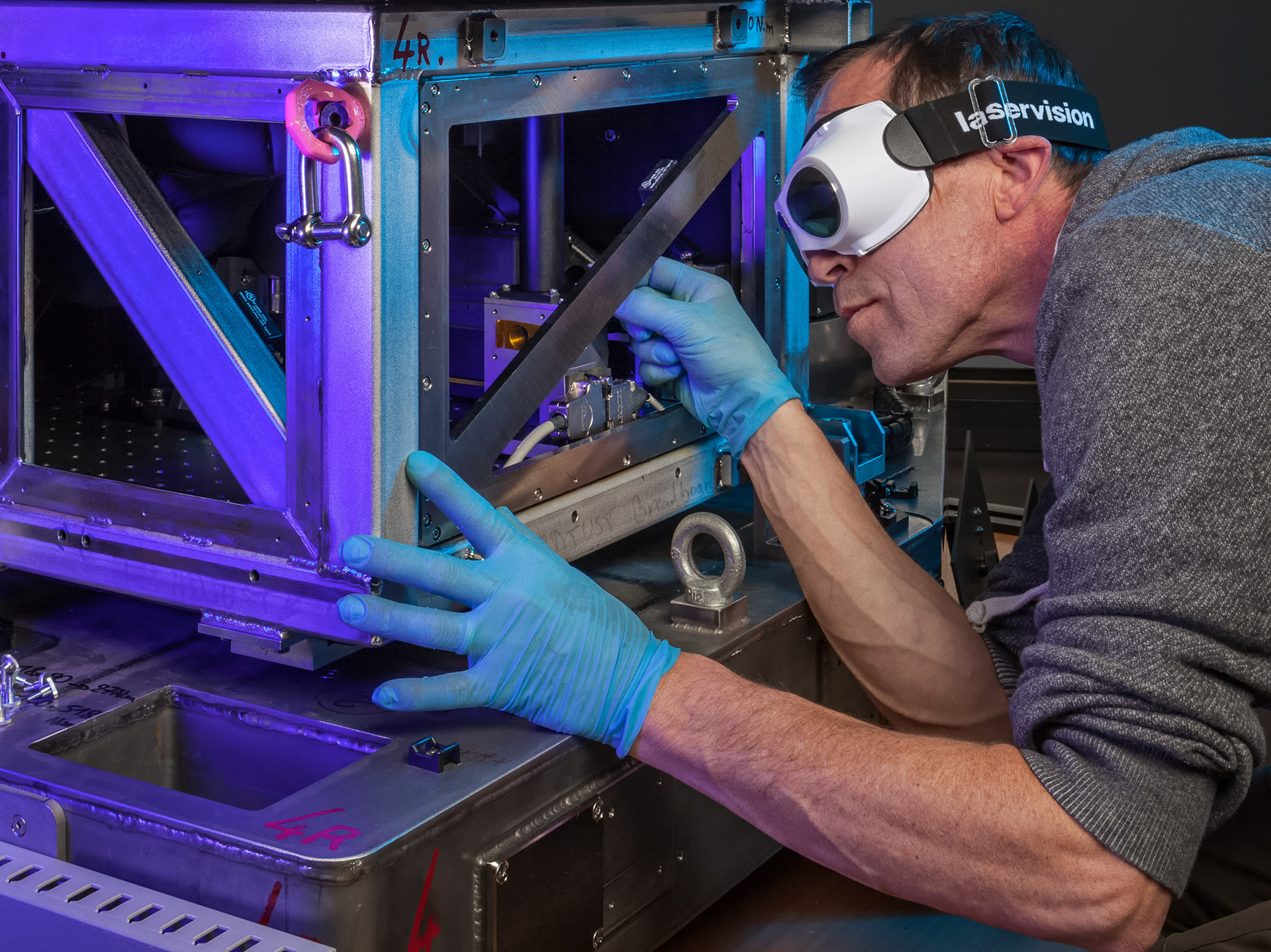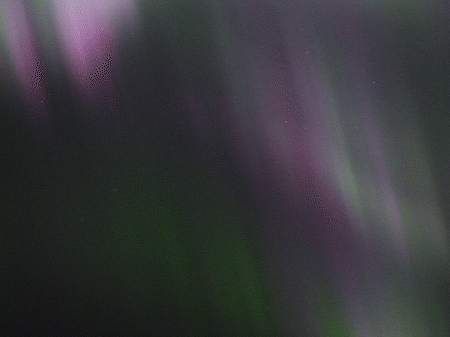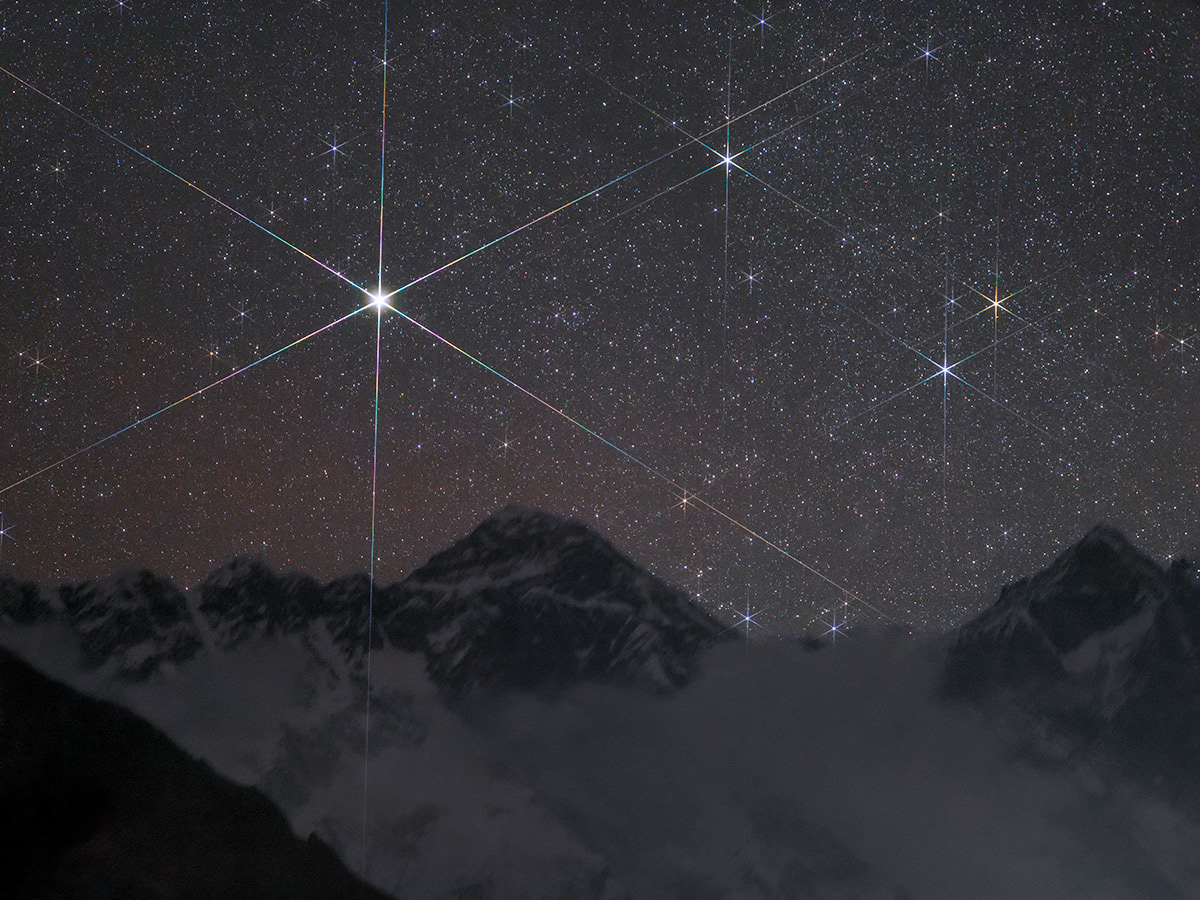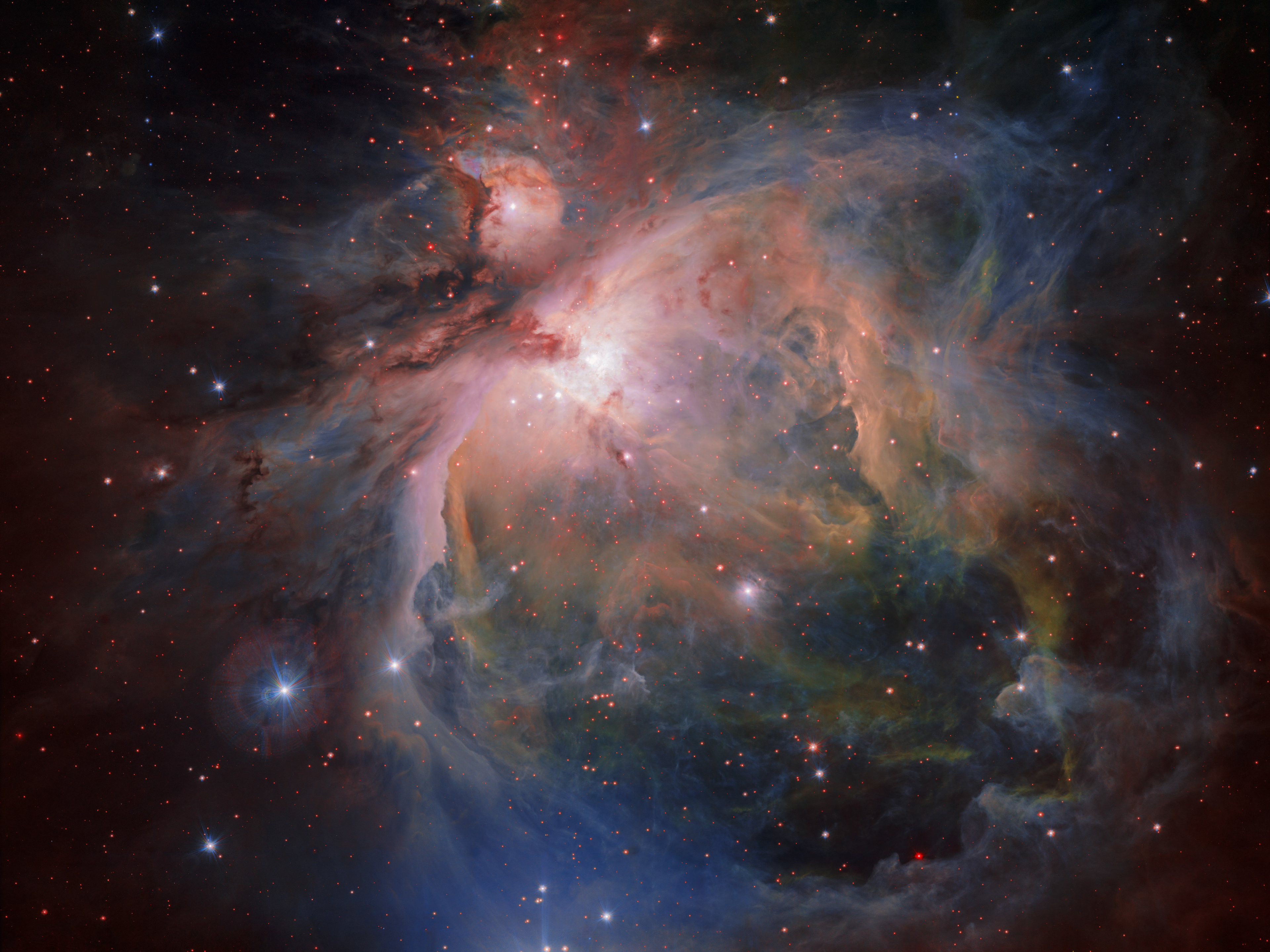
This is an artist’s impression of the exoplanet WASP 121-b, also known as Tylos. The exoplanet’s appearance is based on Hubble data of the object. Credit: NASA, ESA, Q. Changeat et al., Mahdi Zamani (ESA/Hubble)

Artist’s Impression of Early-Universe Dwarf Galaxy / Credit: NOIRLab/NSF/AURA/J. da Silva/Mahdi Zamani

Artist’s Impression: Stellar streams in and around the Milky Way/ Credit: RubinObs/NOIRLab/SLAC/NSF/DOE/AURA/J. daSilva, Mahdi Zamani

Artist’s Impression of Black Hole LID-568 / Credit: NOIRLab/NSF/AURA/J. da Silva/Mahdi Zamani

Artist’s impression of a dwarf galaxy undergoing tidal stripping / Credit: NOIRLab/NSF/AURA/Mahdi Zamani

This illustration shows the distant Comet Bernardinelli-Bernstein as it might look in the outer Solar System. Comet Bernardinelli-Bernstein is estimated to be about 1000 times more massive than a typical comet, making it arguably the largest comet discovered in modern times. / Credit: NOIRLab/NSF/AURA/J. da Silva (Spaceengine)/Mahdi Zamani

Artist’s Impression of Heaviest Supermassive Binary Black Hole / Credit: NOIRLab/NSF/AURA/J. daSilva/Mahdi Zamani

Striking new evidence for a mass immigration of stars into the Andromeda Galaxy has been uncovered by researchers led by astronomers at NSF NOIRLab. The team used the DOE’s Dark Energy Spectroscopic Instrument on the Nicholas U. Mayall 4-meter Telescope at Kitt Peak National Observatory, a Program of NSF NOIRLab, to reveal intricate structures in this galaxy with unprecedented detail and clarity. Each of the dots on this image represents an individual star in the Andromeda Galaxy, with the motion of the star (relative to the galaxy) color-coded from blue (moving toward us) to red (moving away from us). / Credit: KPNO/NOIRLab/AURA/NSF/E. Slawik/D. de Martin/M. Zamani

Rocky debris, the pieces of a former rocky planet that has broken up, spiral inward toward a white dwarf in this illustration. / Credit: NOIRLab/NSF/AURA/J. da Silva Image processing: Mahdi Zamani and Maral Kosari (NSF NOIRLab)

Artist impression of ultra fluffy gas giant planet orbiting a red dwarf star / Credit: NOIRLab/NSF/AURA/J. da Silva/Spaceengine/Mahdi Zamani

Illustration of a Short Gamma-Ray Burst Caused by a Collapsing Star / Credit: International Gemini Observatory/NOIRLab/NSF/AURA/J. da Silva, Mahdi Zamani

All-sky photo of the night sky with all 88 constellations lines and boundaries. / Credit: NOIRLab/NSF/AURA/E. Slawik/Mahdi Zamani

Artist Impression of the exoplanet WASP-76b / Credit: International Gemini Observatory/NOIRLab/NSF/AURA/J. da Silva/Spaceengine/Mahdi Zamani

Artist Impression: Interstellar object rapidly approaching our Solar System /Credit: RubinObs/NOIRLab/SLAC/NSF/DOE/AURA/J. daSilva/ Mahdi Zamani

This artist’s impression shows a field of Population III stars as they would have appeared a mere 100 million years after the Big Bang. / Credit: NOIRLab/NSF/AURA/J. da Silva/Spaceengine/Mahdi Zamani

his illustration depicts the population of brown dwarfs in and around the Milky Way that could be detected by Rubin Observatory. Too big to be planets and too small to be stars, these objects have remained relatively unchanged since they formed in the early Universe. Rubin Observatory’s ten-year Legacy Survey of Space and Time will detect thousands of previously unseen, faint brown dwarfs, vastly increasing the numbers of these ancient relics available for scientists to study, and unlocking clues to the Milky Way’s formation and evolution. Credits: Mahdi Zamani.

Artist’s Impression of a Pair of Quasars at ‘Cosmic Noon’/ Credit: International Gemini Observatory/NOIRLab/NSF/AURA/Mahdi Zamani, J. da Silva

A slice through the 3D map of galaxies from DESI / Credit: D. Schlegel/Berkeley Lab using data from DESI Acknowledgment: Mahdi Zamani (NSF NOIRLab)

Artist’s impression of the closest black hole to Earth and its Sun-like companion star / Credit: International Gemini Observatory/NOIRLab/NSF/AURA/J. da Silva/Spaceengine/Mahdi Zamani

Illustration of the stars in center of the Milky Way / Credit: International Gemini Observatory/NOIRLab/NSF/AURA/J. da Silva/(Spaceengine) Acknowledgement: Mahdi Zamani (NSF NOIRLab)

GNIRS' new 3D vision resolves the double nuclei of the galaxy NGC 6240. / Credit: International Gemini Observatory/NOIRLab/NSF/AURA/GNIRS Team Image processing: M. Rodriguez (Gemini Observatory/NSF NOIRLab), J. Miller (Gemini Observatory/NSF NOIRLab), & M. Zamani (NSF NOIRLab)

Illustration of the black hole Sagittarius A* at the center of the Milky Way / Credit: International Gemini Observatory/NOIRLab/NSF/AURA/J. da Silva/(Spaceengine) Acknowledgement: Mahdi Zamani (NSF NOIRLab)

Artist Illustration of Early-Universe Quasar Cosmic Neighborhood / Credit: NOIRLab/NSF/AURA/M. Garlick/J. da Silva (Spaceengine)/Mahdi Zamani

Illustration of Trojan Asteroid 2020 XL5 / Credit: NOIRLab/NSF/AURA/J. da Silva/Spaceengine Acknowledgment: Mahdi Zamani (NSF NOIRLab)

This artist's impression illustrates the ultimate fate of HD 45166 after its core has collapsed, resulting in a neutron star with a magnetic field of around 100 trillion gauss — the most powerful type of magnet in the Universe. / Credit: NOIRLab/AURA/NSF/P. Marenfeld/Mahdi Zamani

Artist’s impression of a highly unusual star that may evolve into a magnetar / Credit: NOIRLab/AURA/NSF/P. Marenfeld/Mahdi Zamani

Massive Magnetic Helium Star Goes Supernova / Credit: NOIRLab/AURA/NSF/P. Marenfeld/Mahdi Zamani

Artist’s Impression of Kilonova Progenitor Star System / Credit: CTIO/NOIRLab/NSF/AURA/J. da Silva/Spaceengine/M. Zamani

Illustration of Primordial Stellar Stream near Milky Way / Credit: International Gemini Observatory/NOIRLab/NSF/AURA/J. da Silva/Spaceengine Acknowledgment: M. Zamani (NSF NOIRLab)

Illustration of Double Quasars in Merging Galaxies / Credit: International Gemini Observatory/NOIRLab/NSF/AURA/J. da Silva/Mahdi Zamani

The southern plane of the Milky Way from the ATLASGAL survey / Credit: ESO/APEX/ATLASGAL consortium/NASA/GLIMPSE consortium/ESA/Planck

Gemini Spectrum of 'the Finch' / Credit: International Gemini Observatory/NOIRLab/NSF/AURA/ESA/NASA/A. Chrimes/M. Zamani

An illustration of a terrestrial exoplanet, with its star in the background. Credit: NOIRLab/NSF/AURA/J. daSilva, M. Zamani
